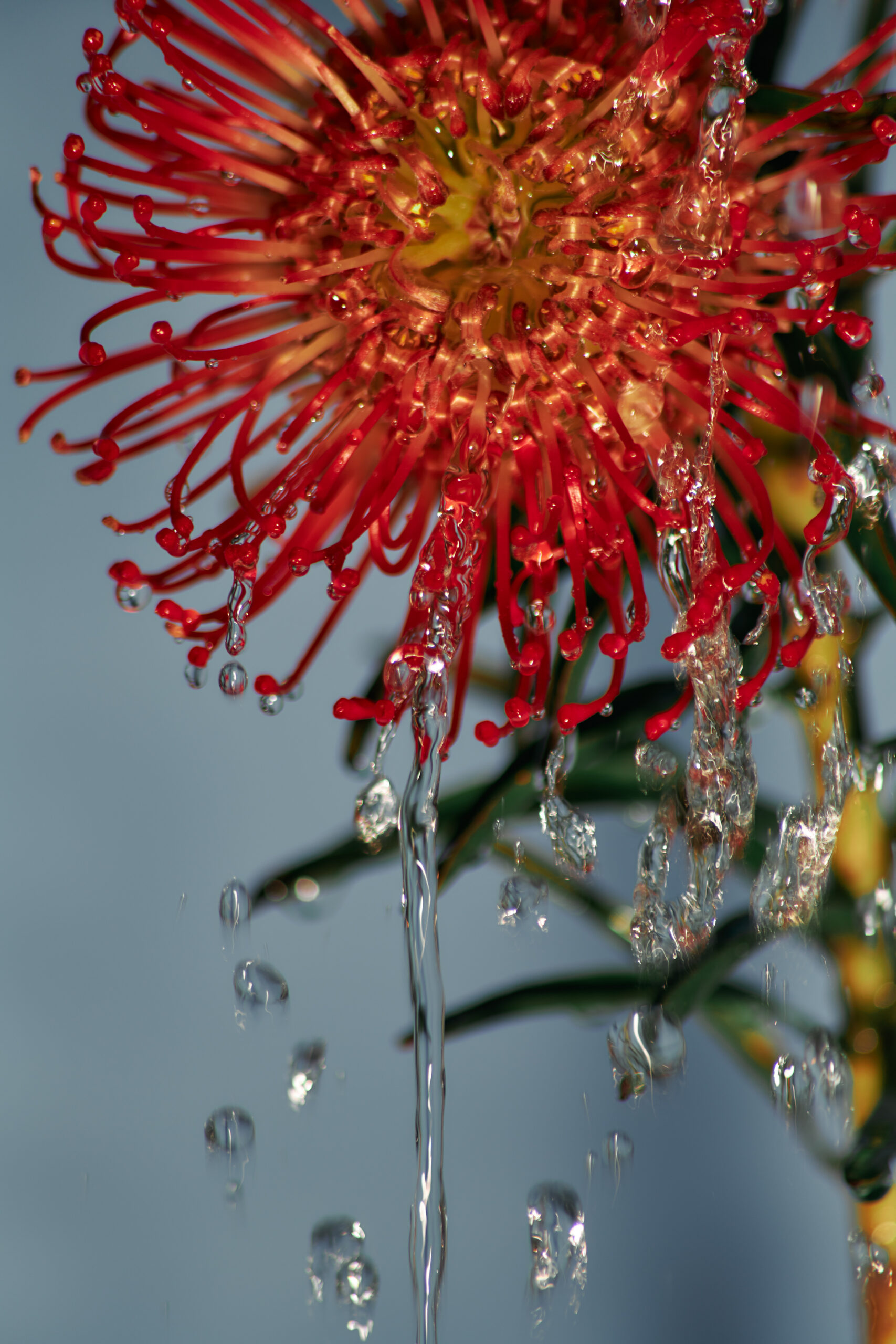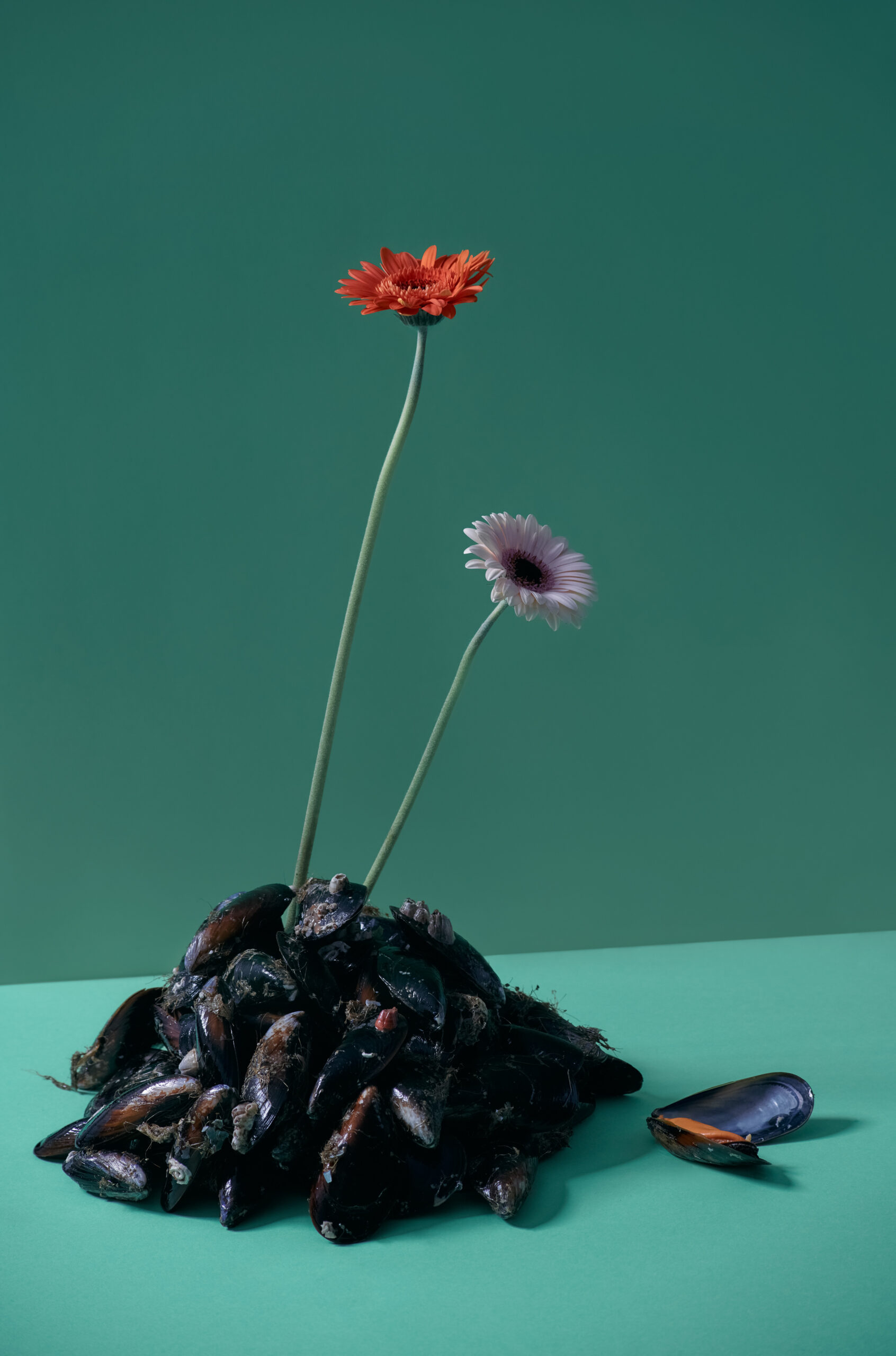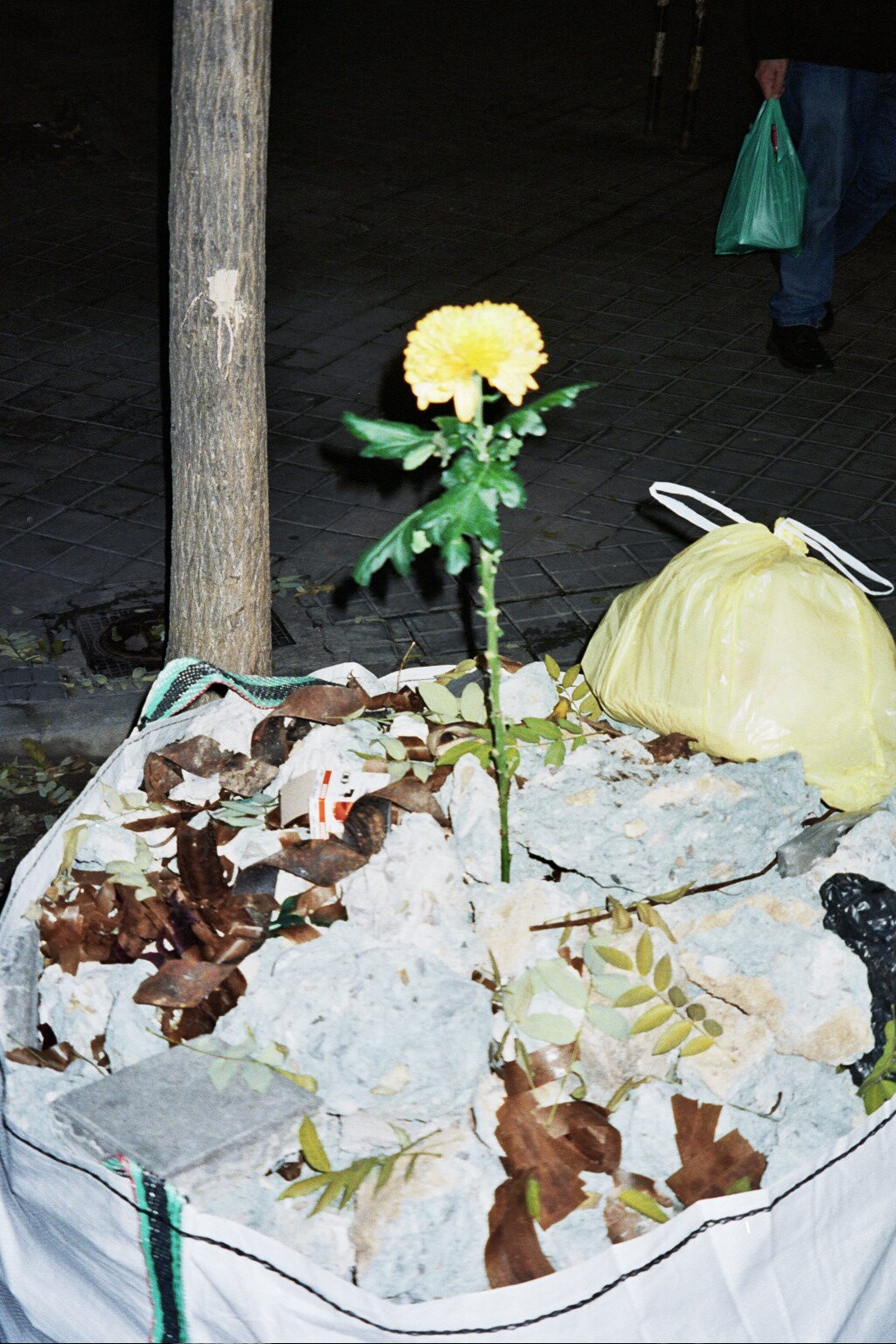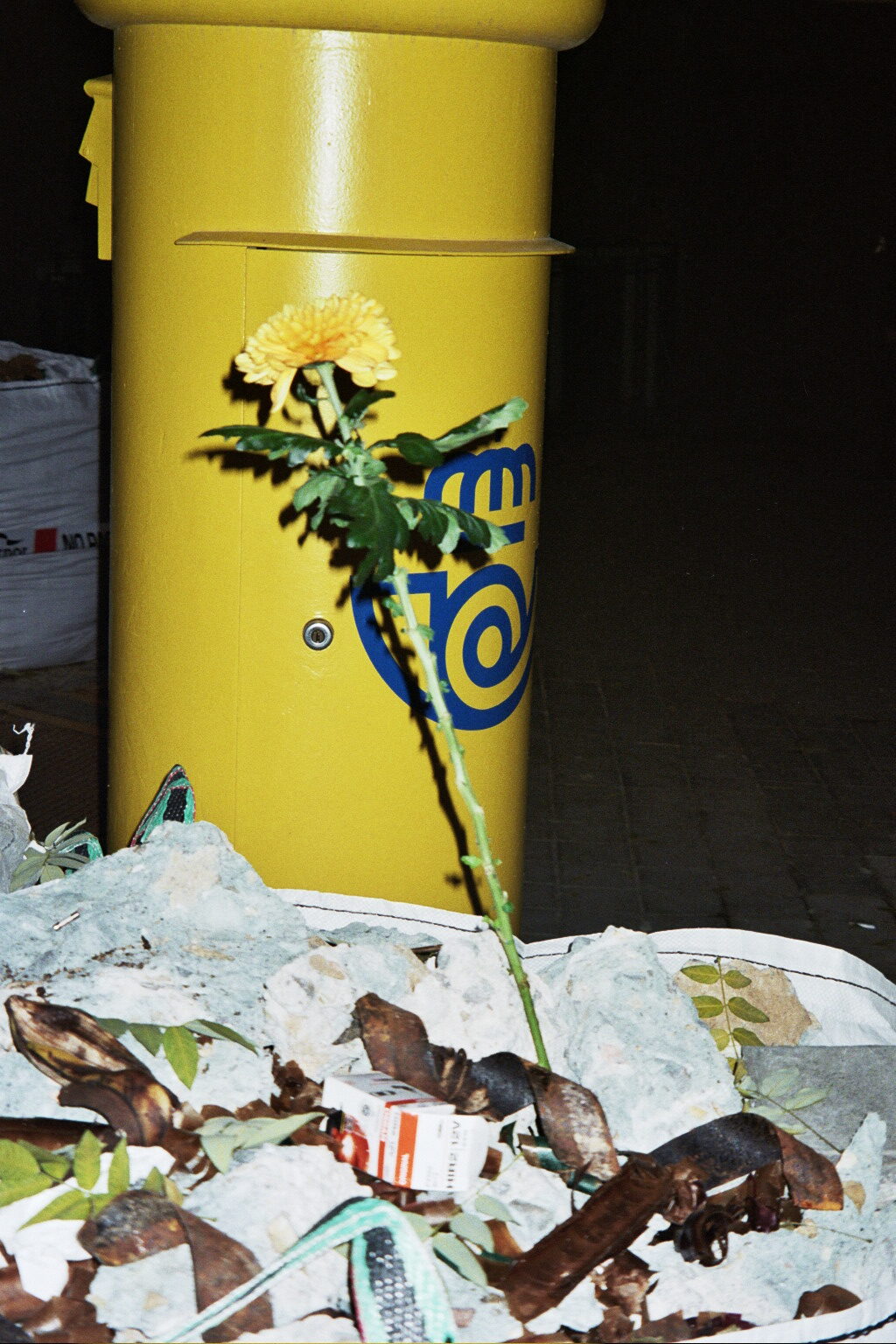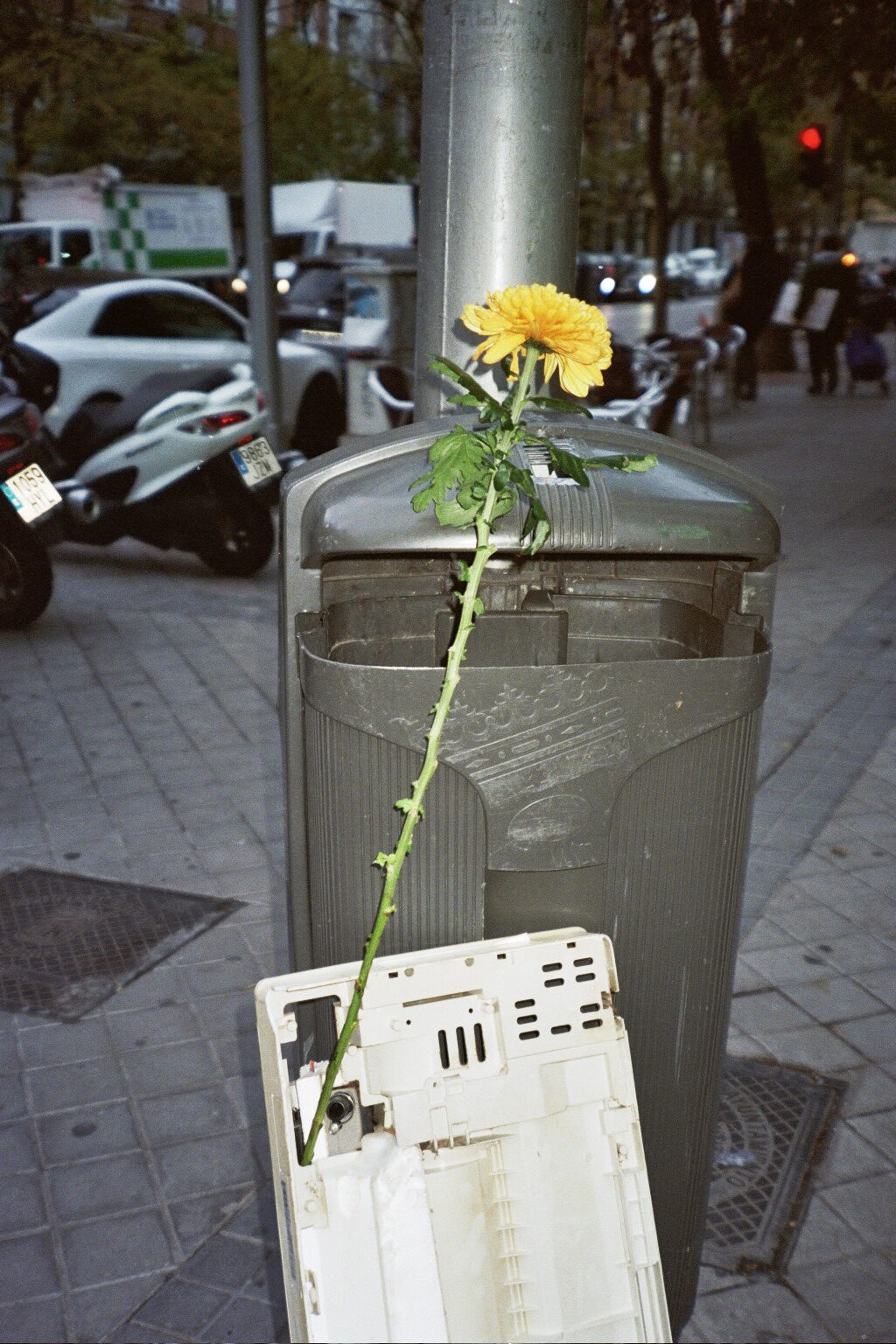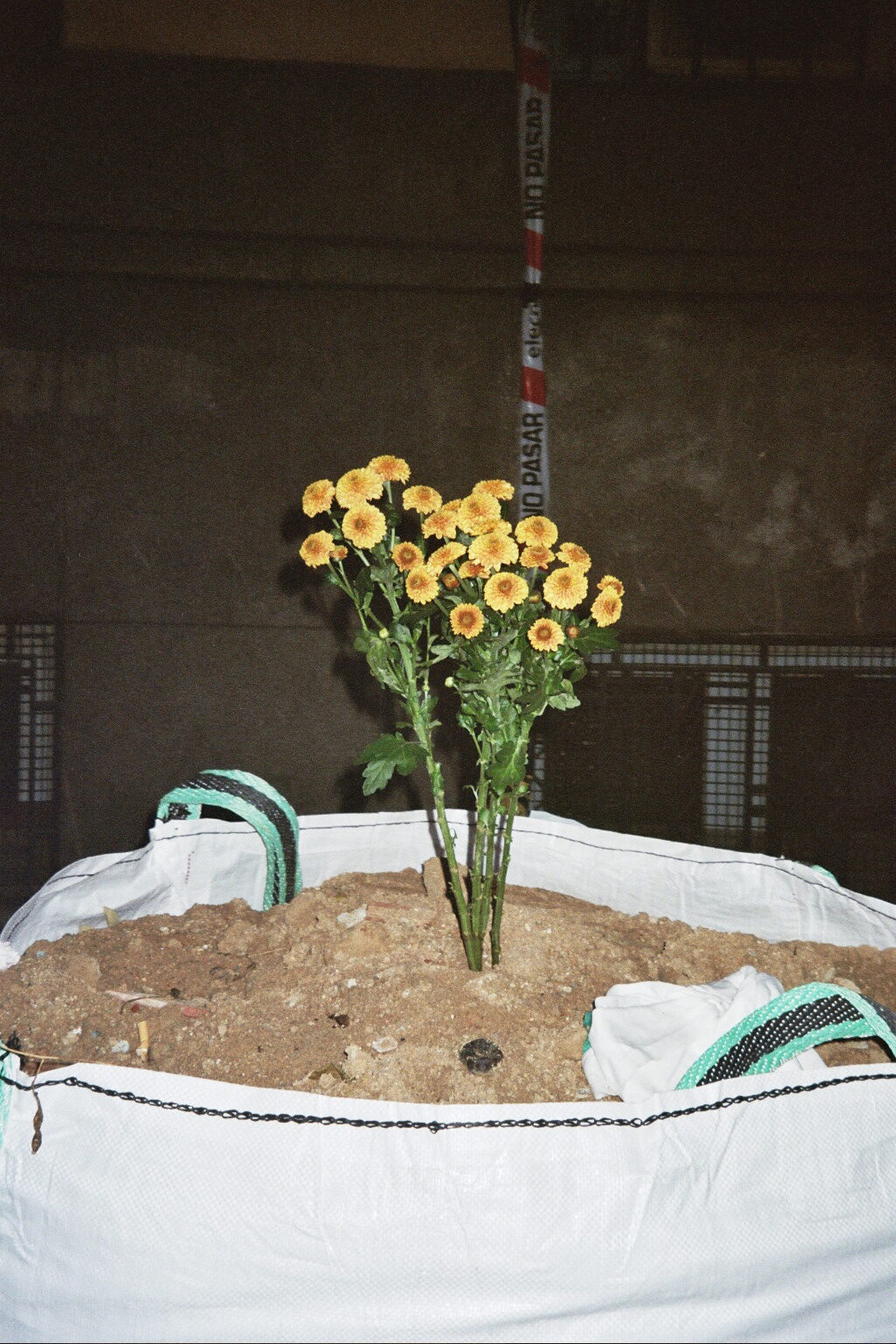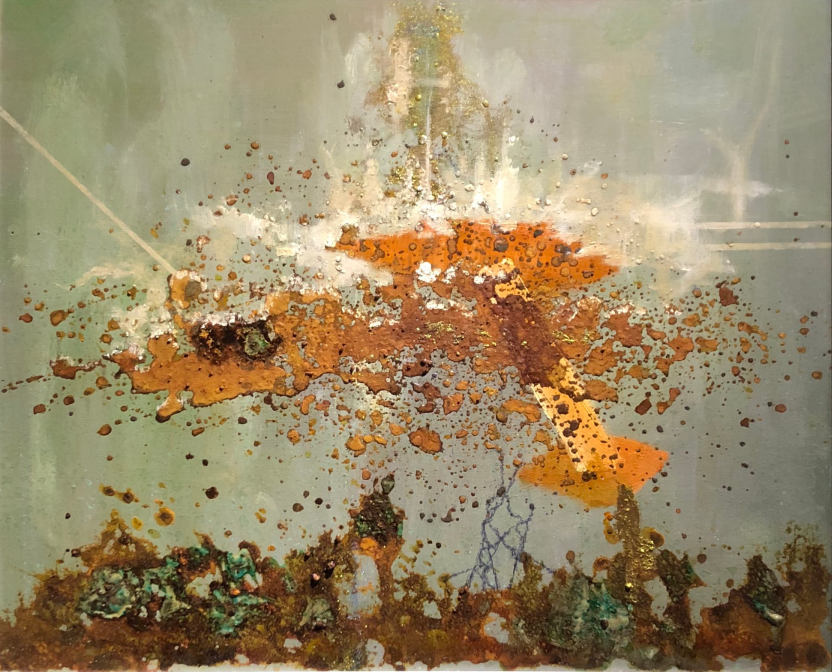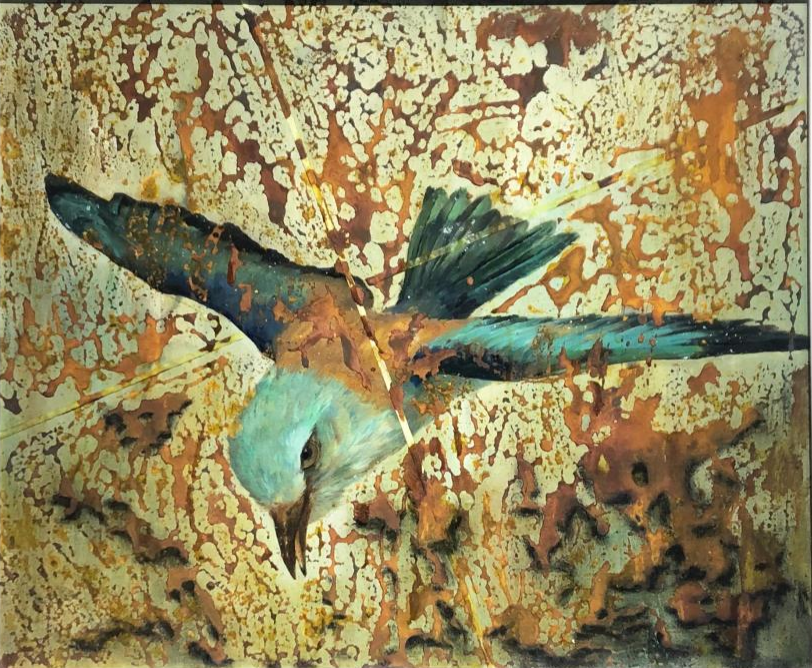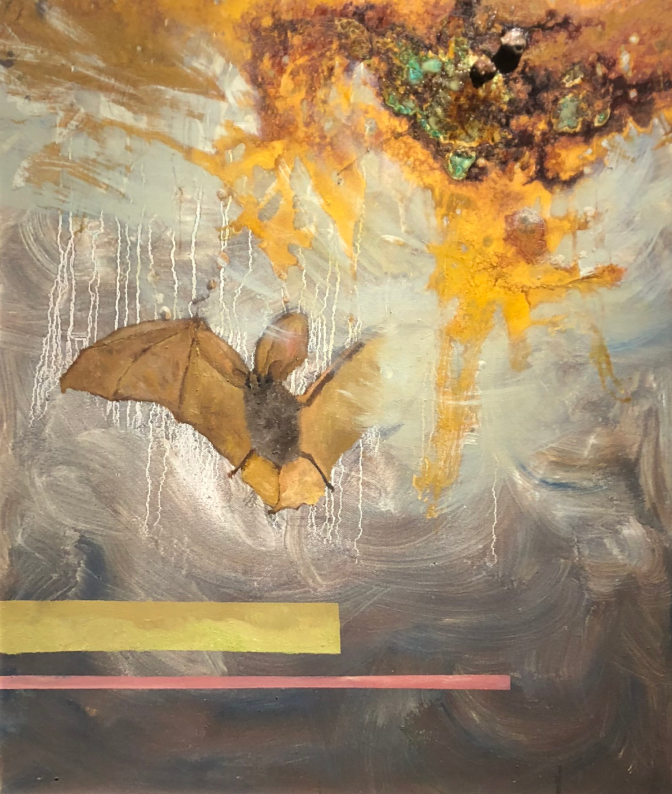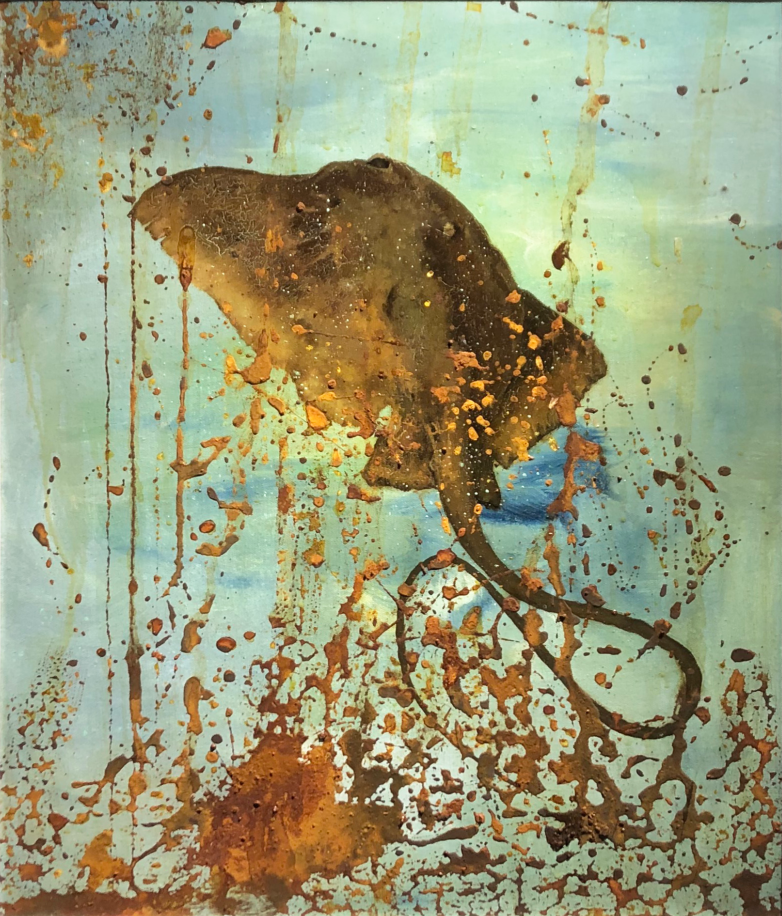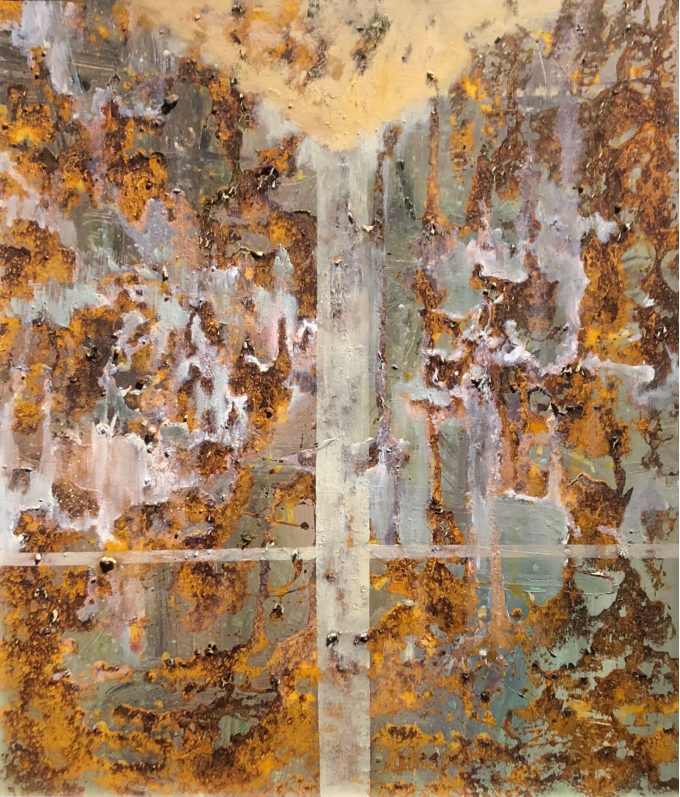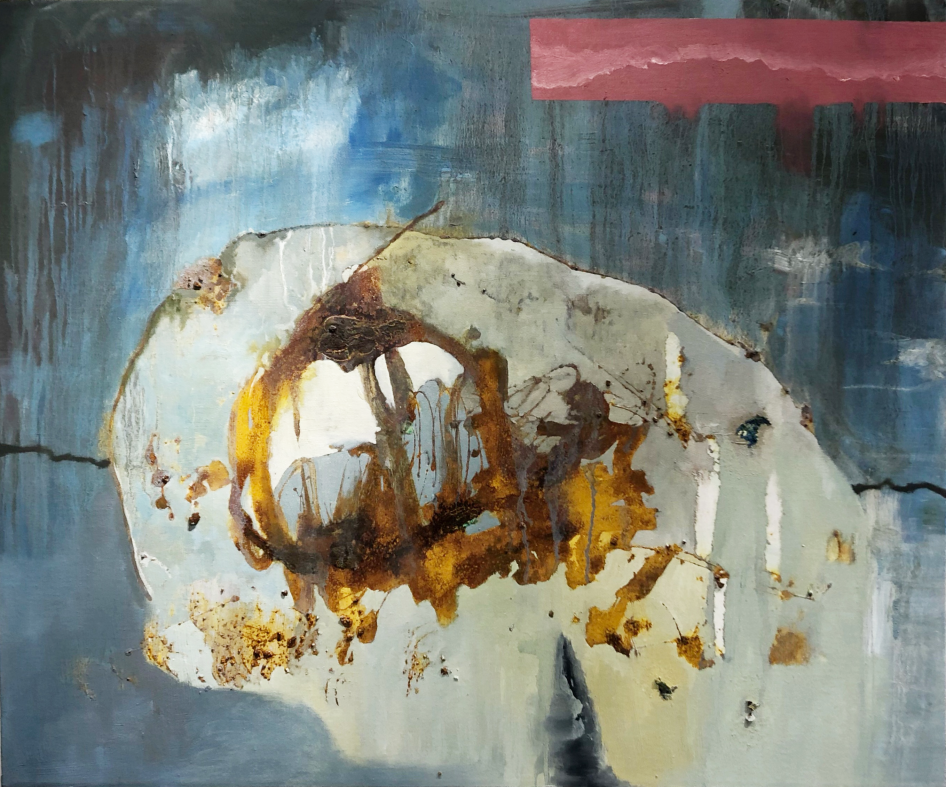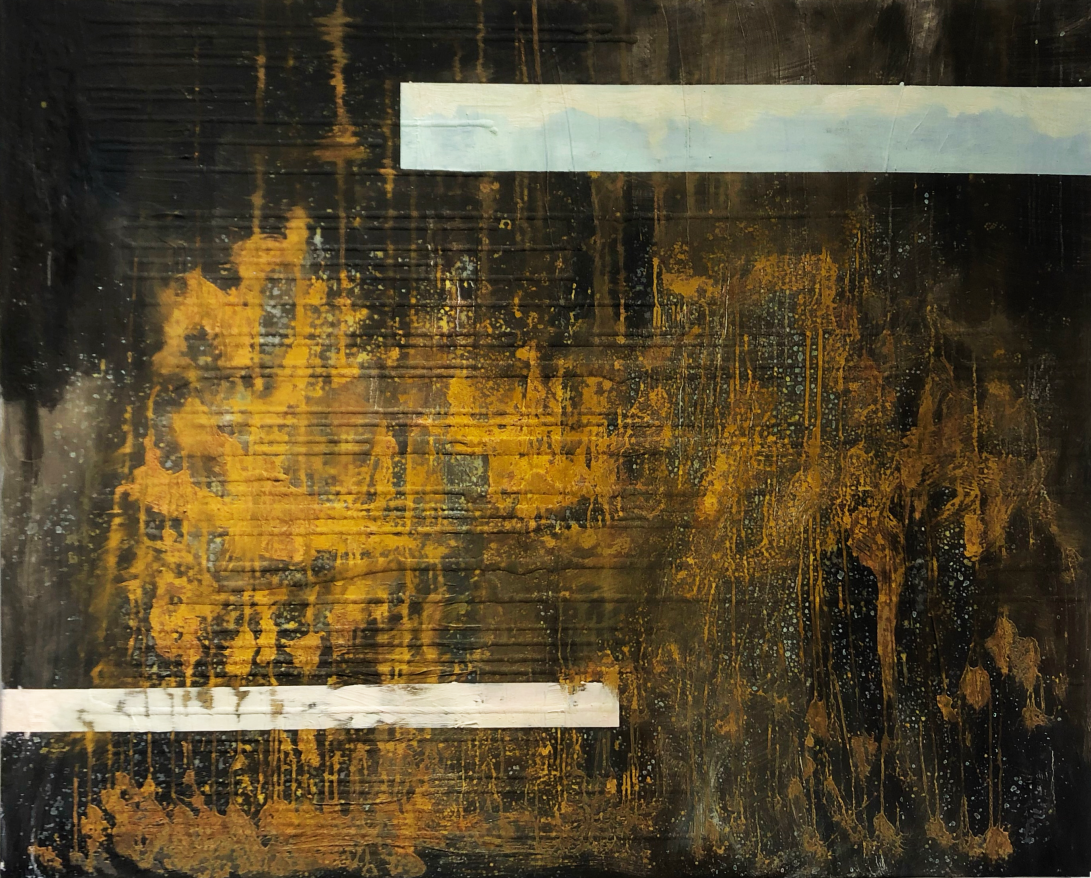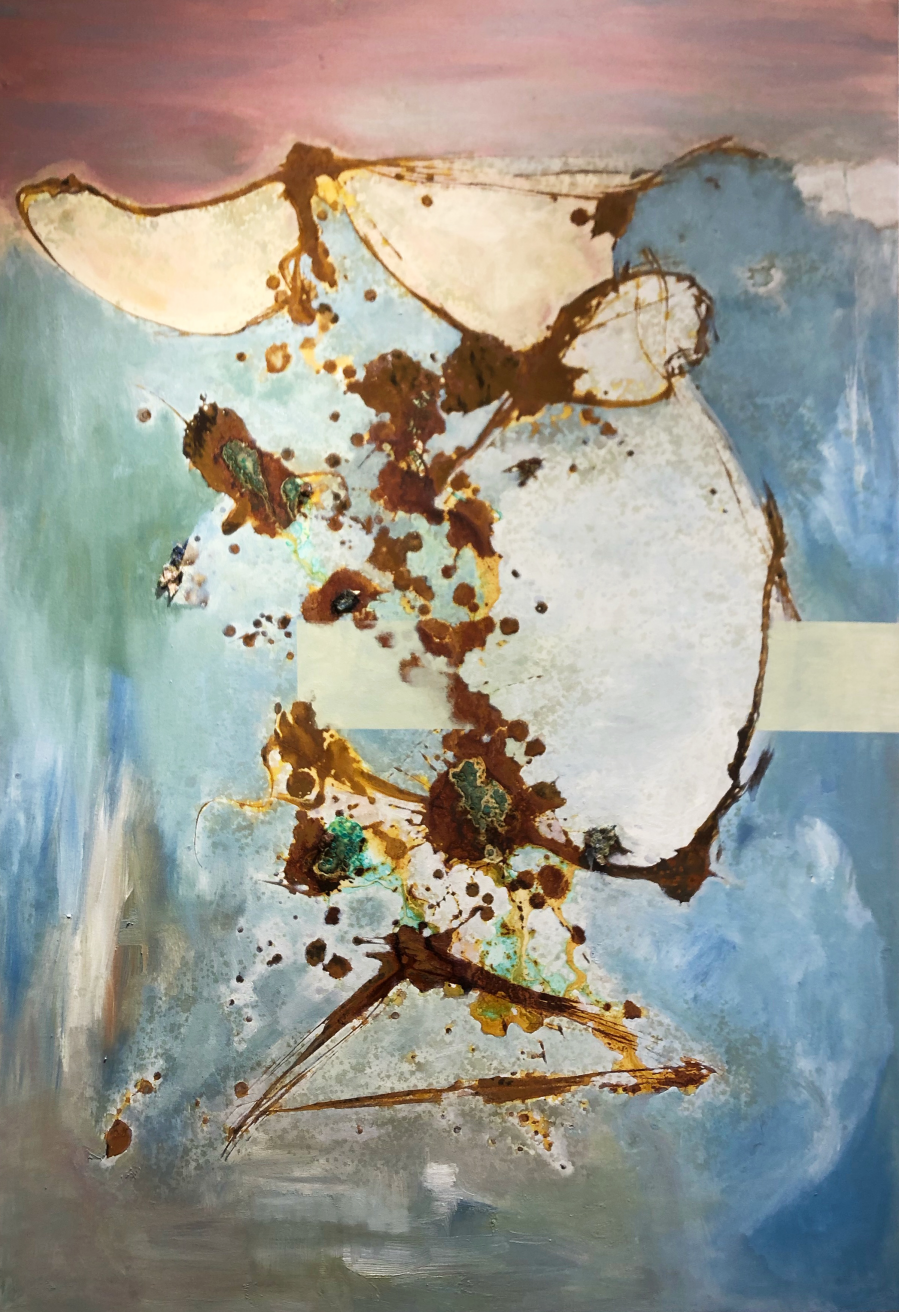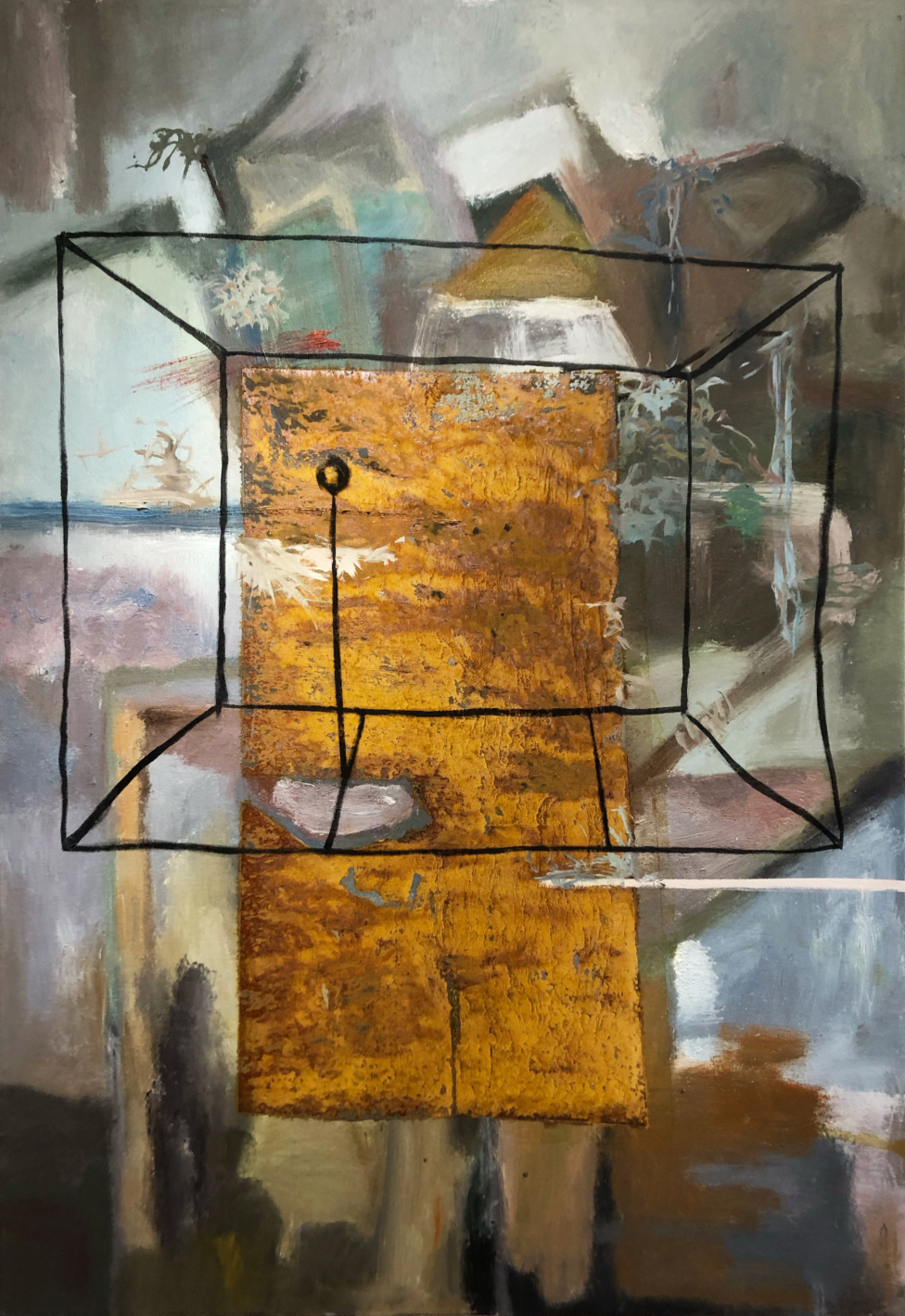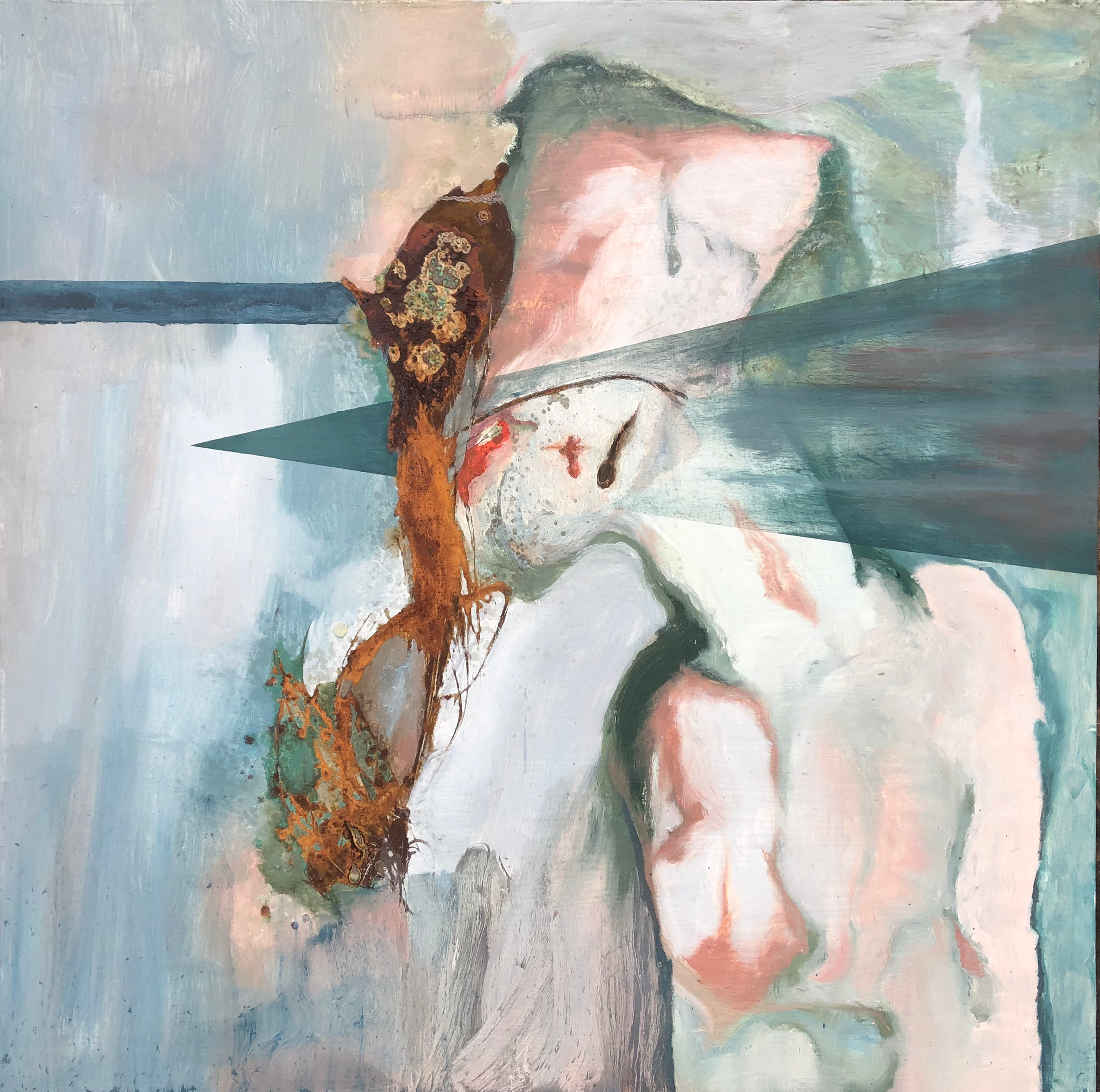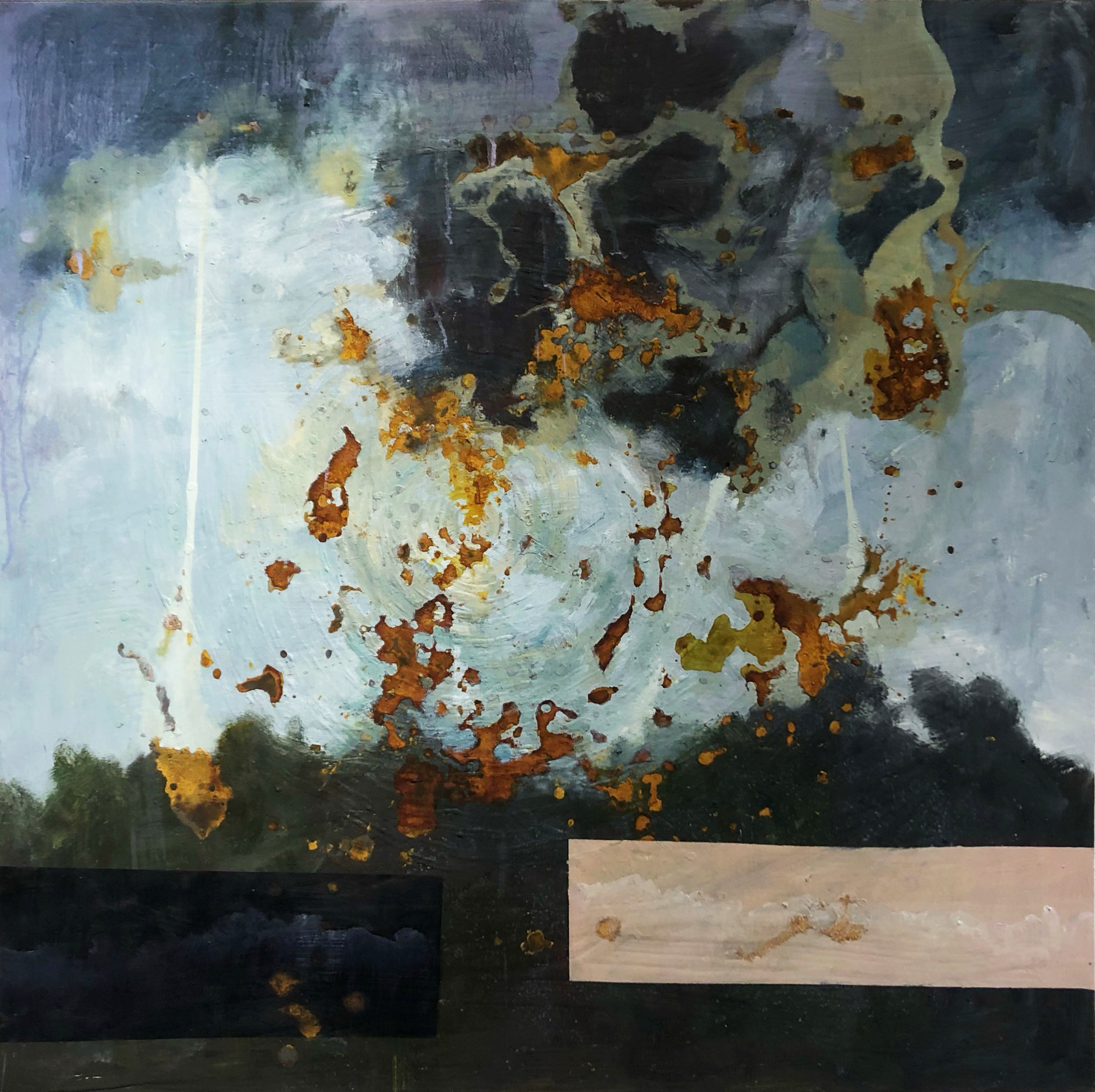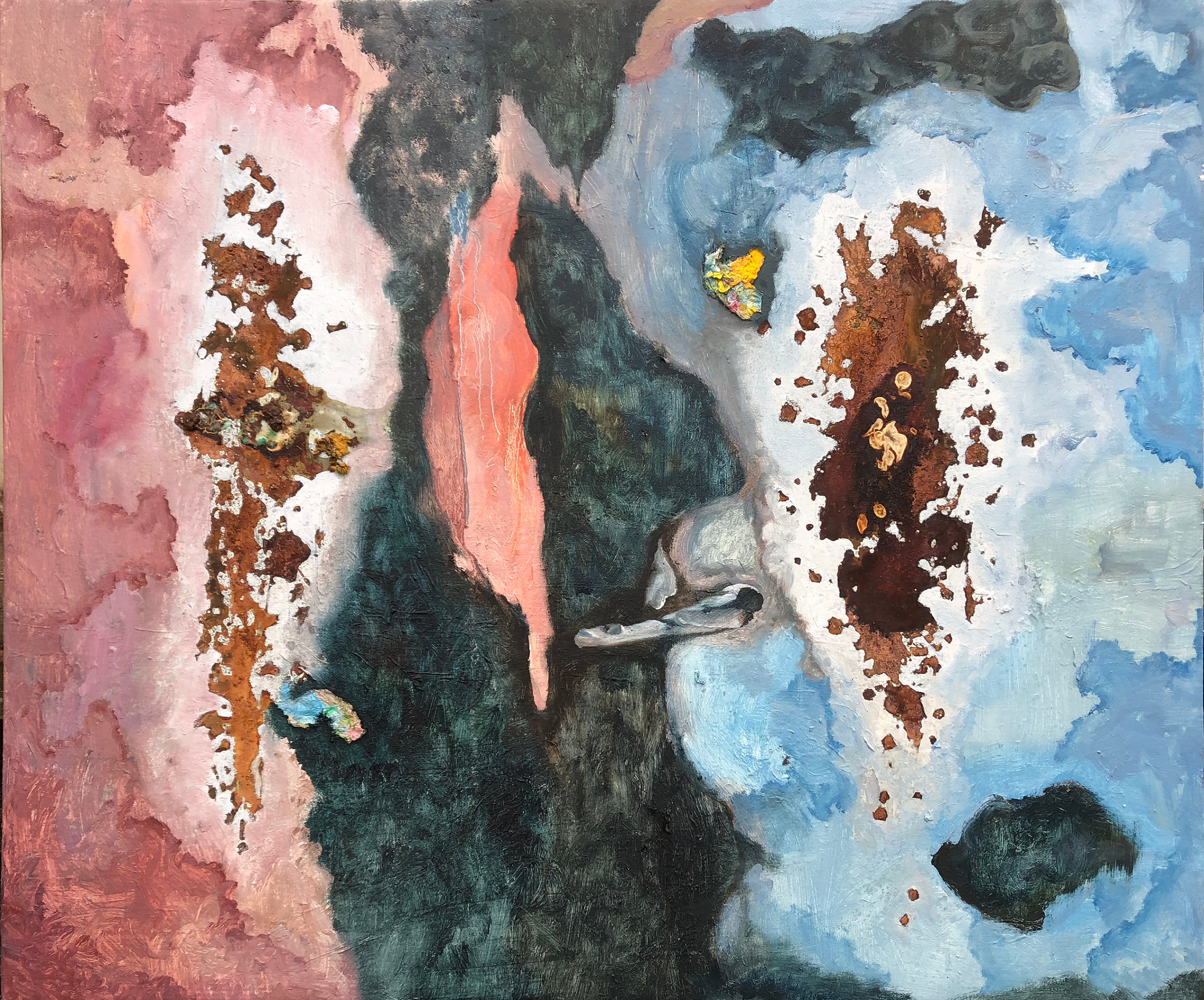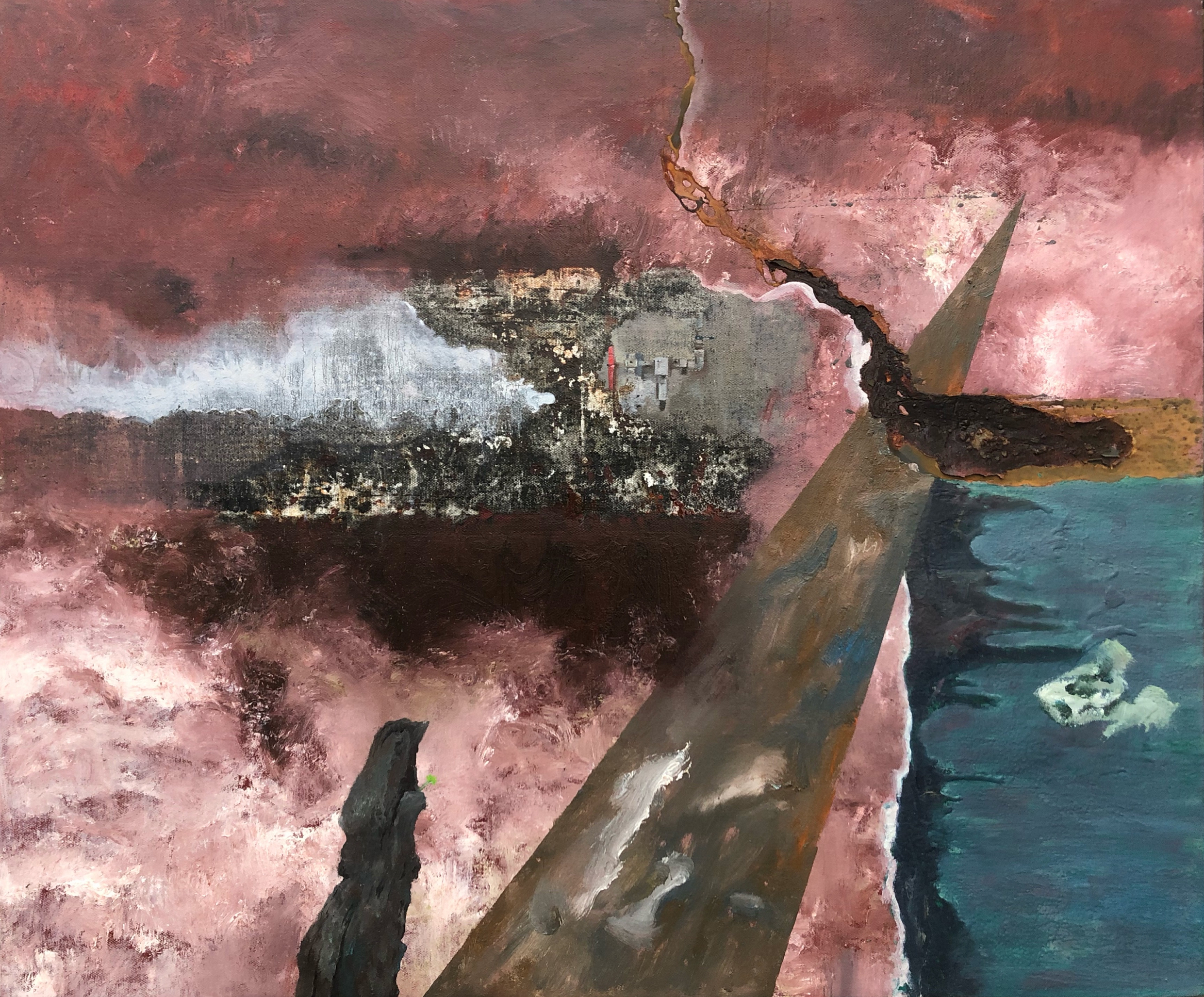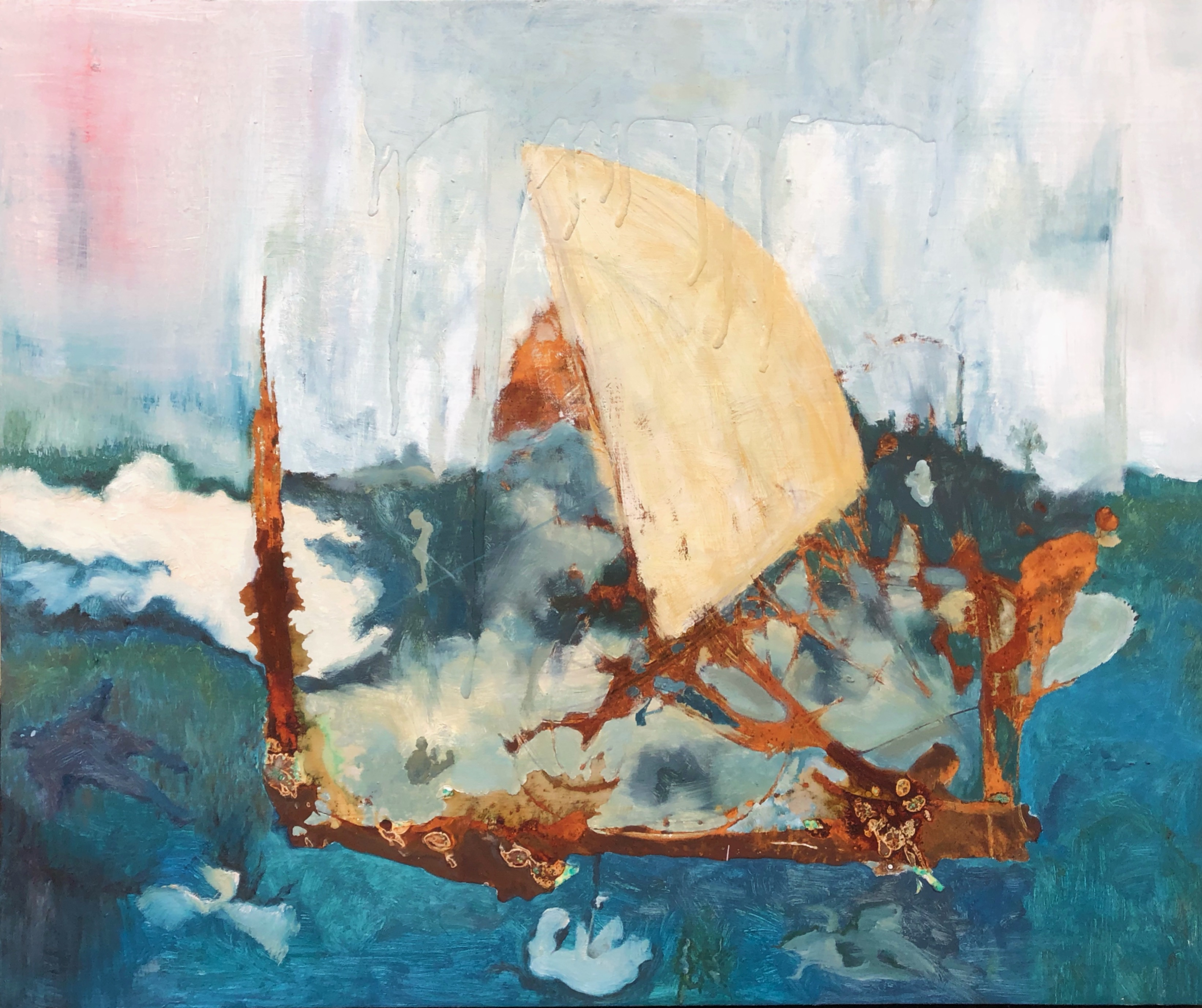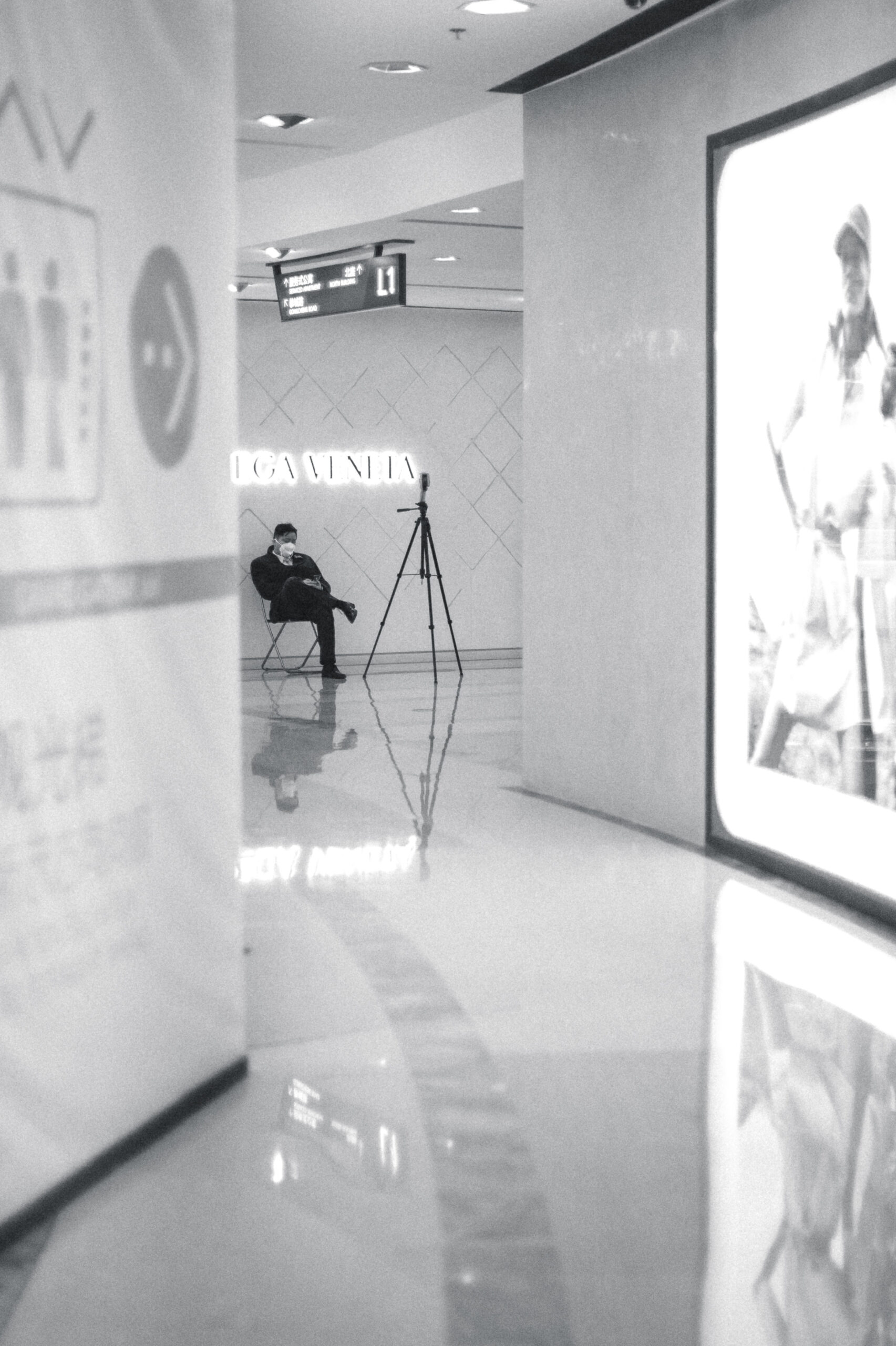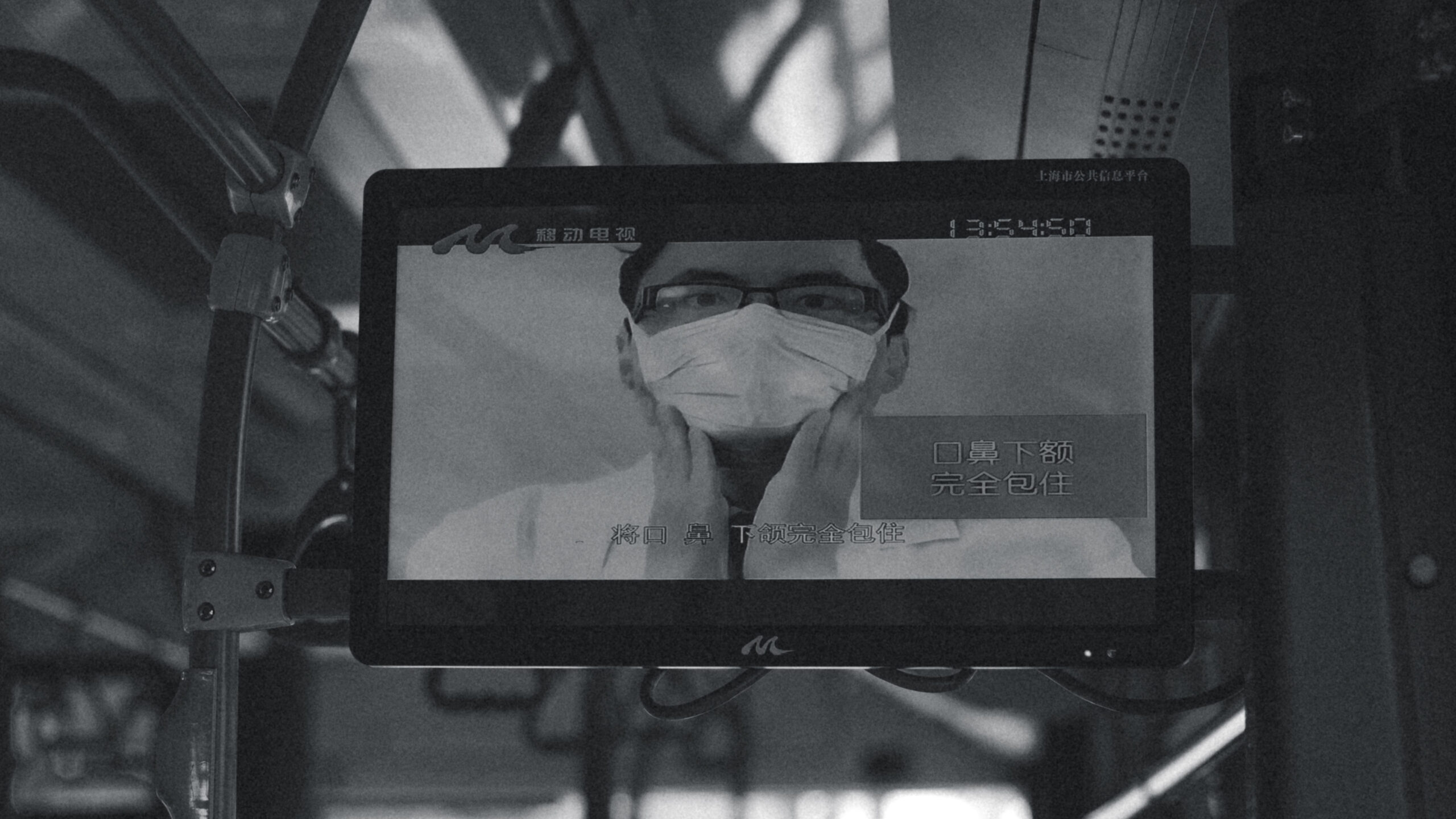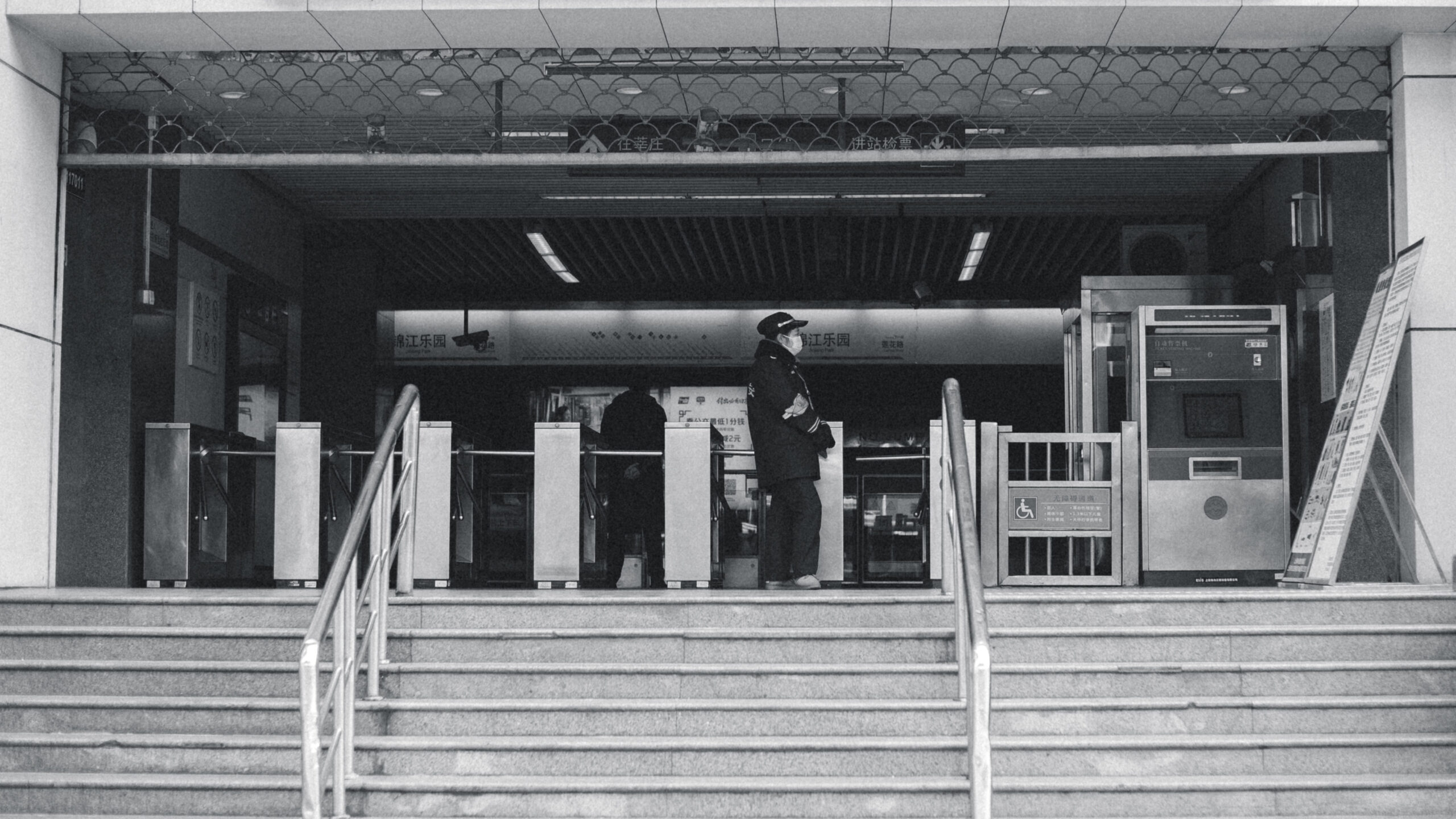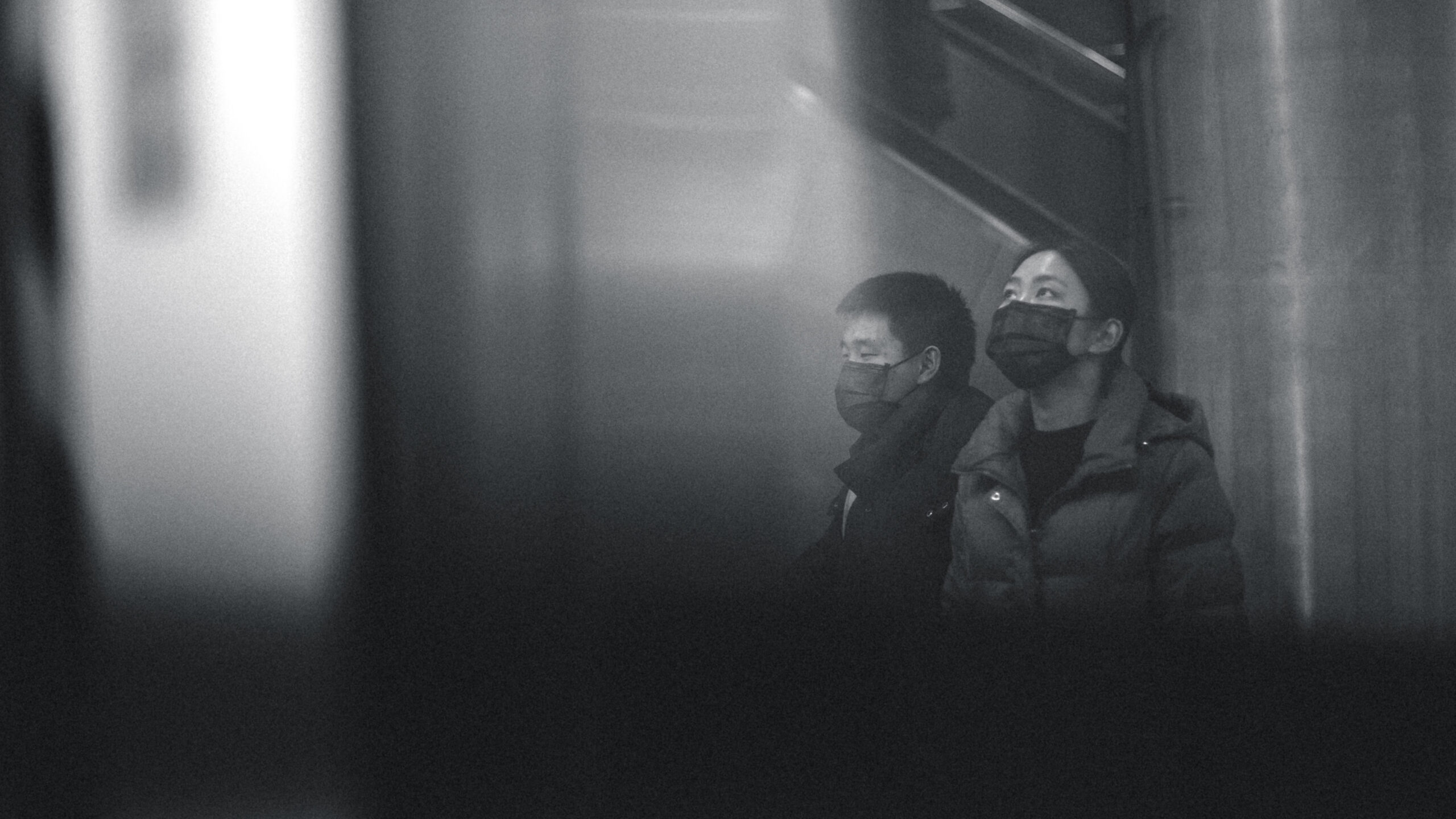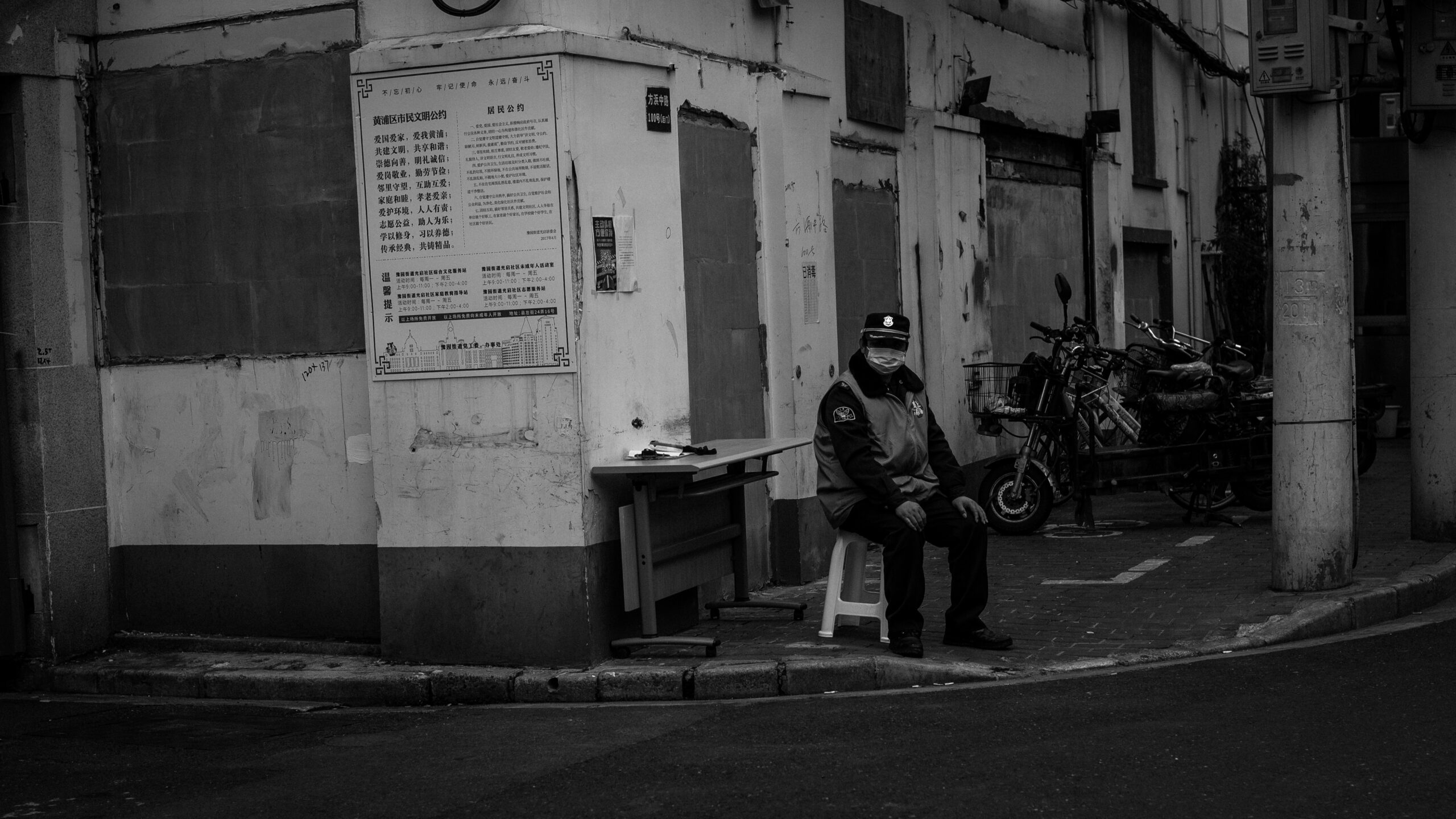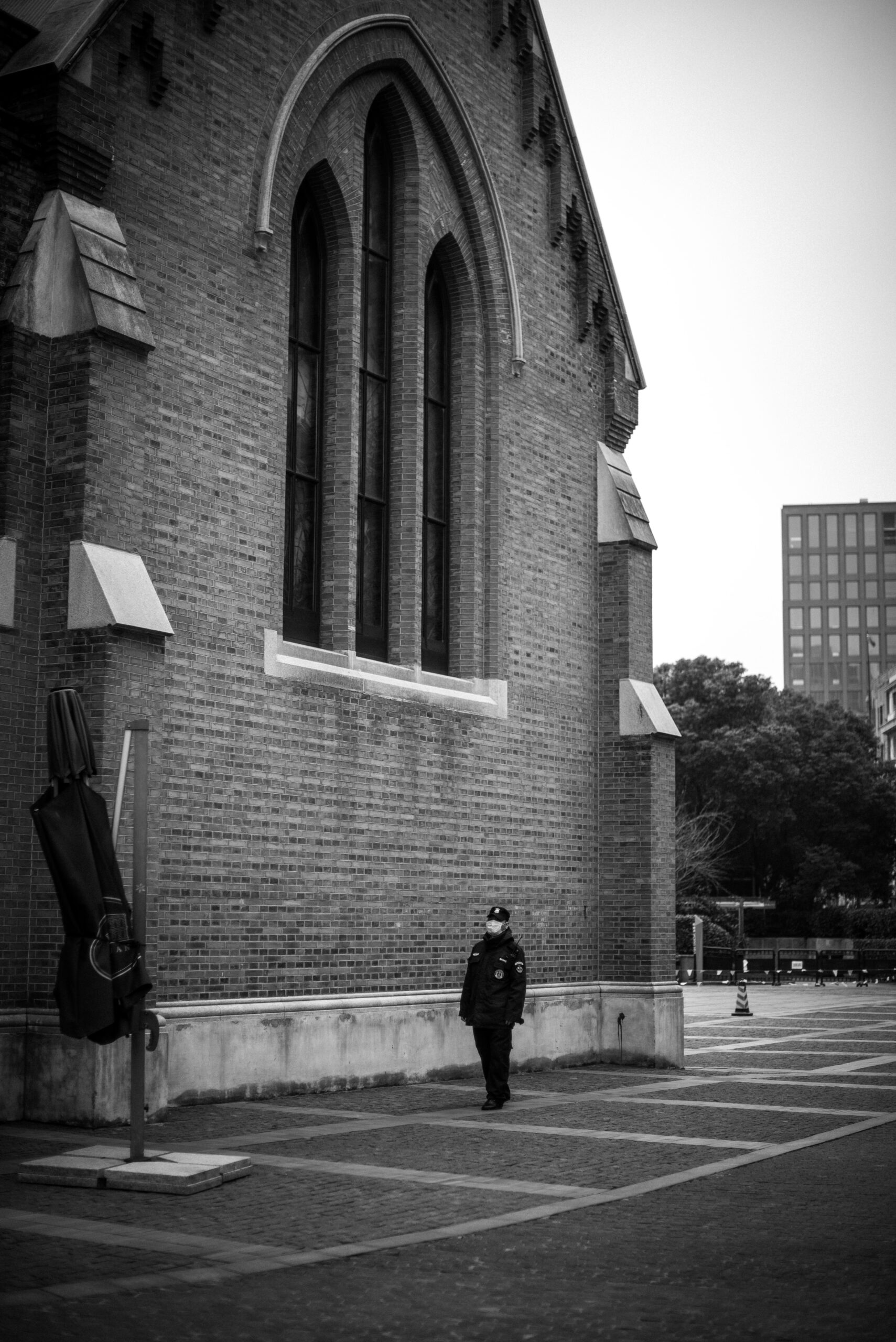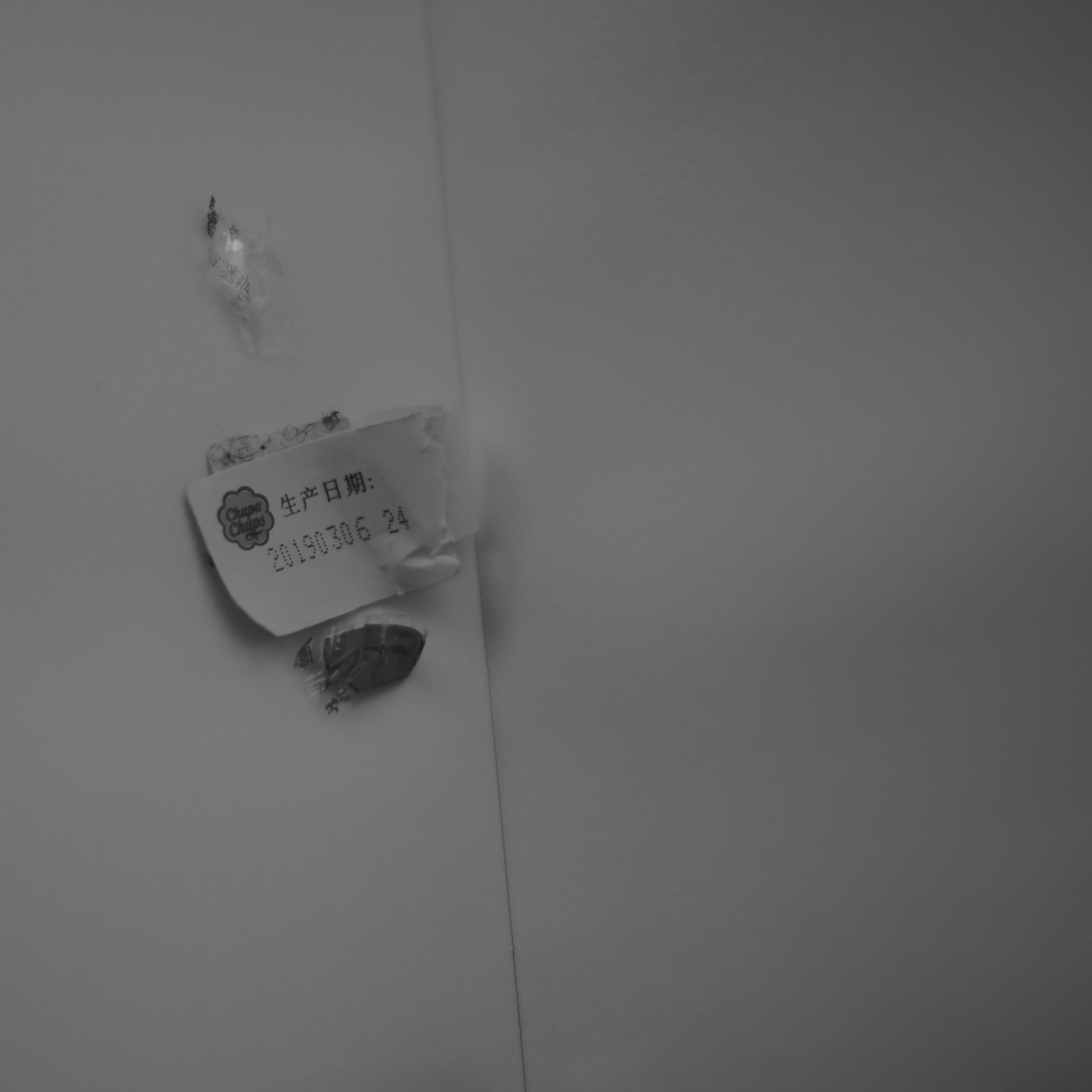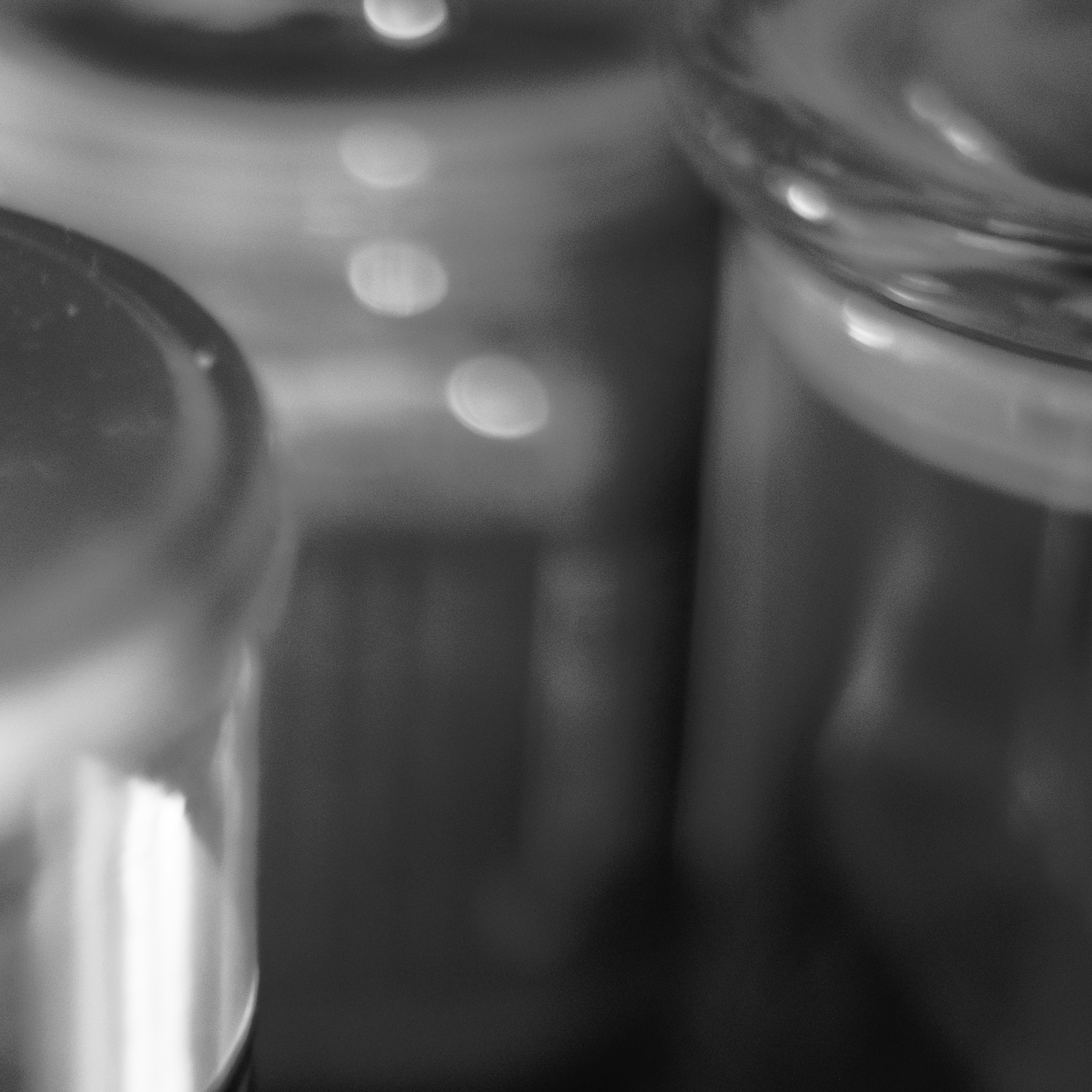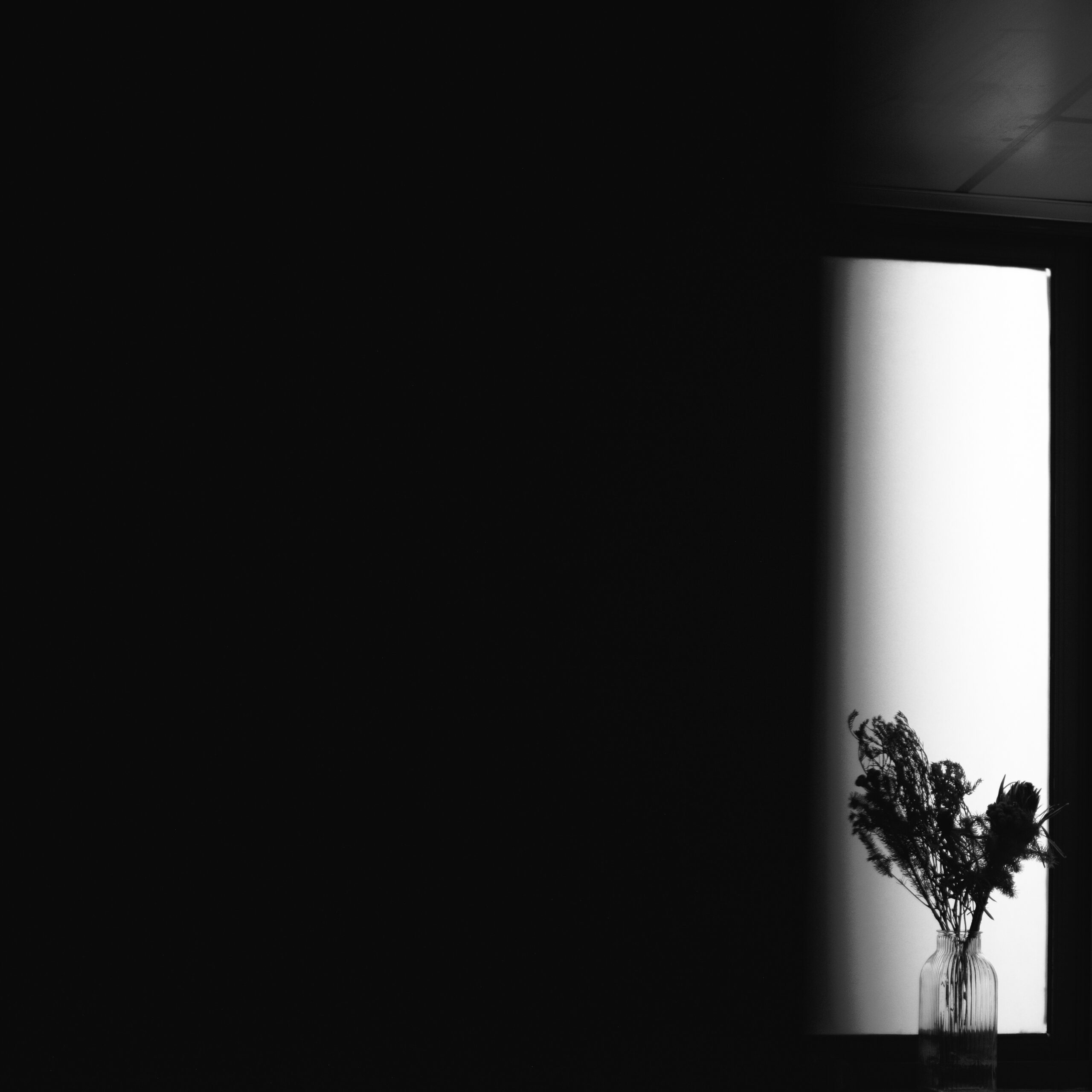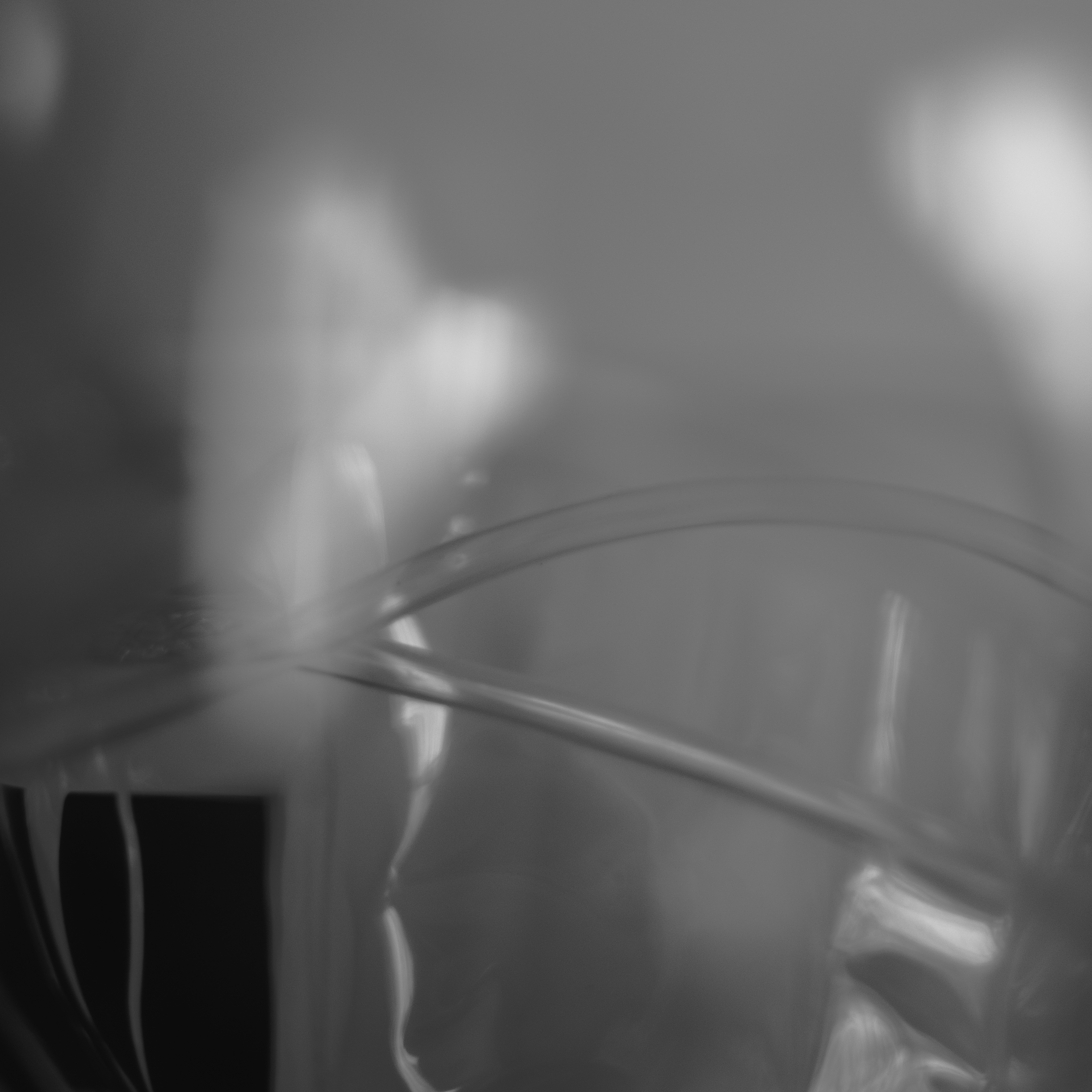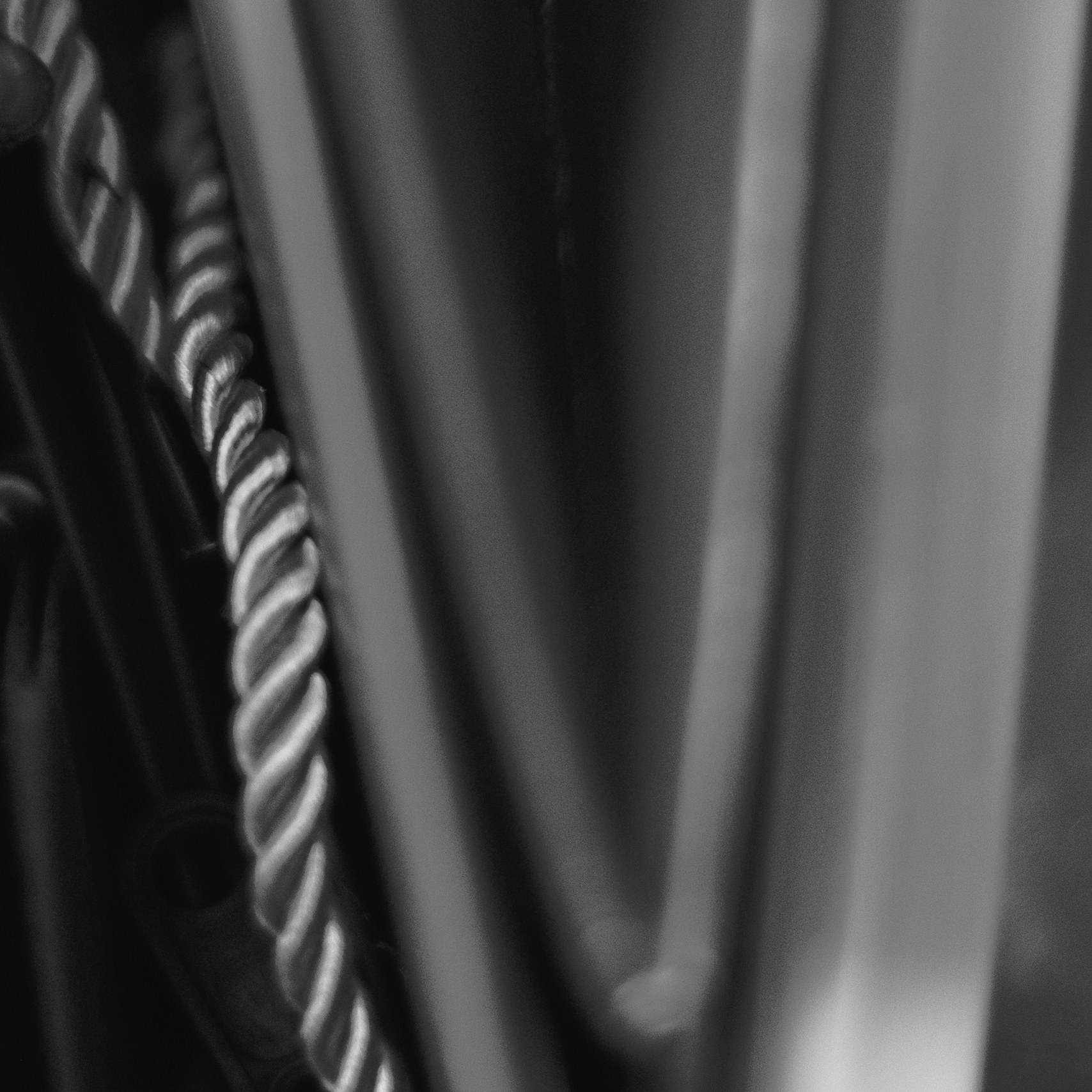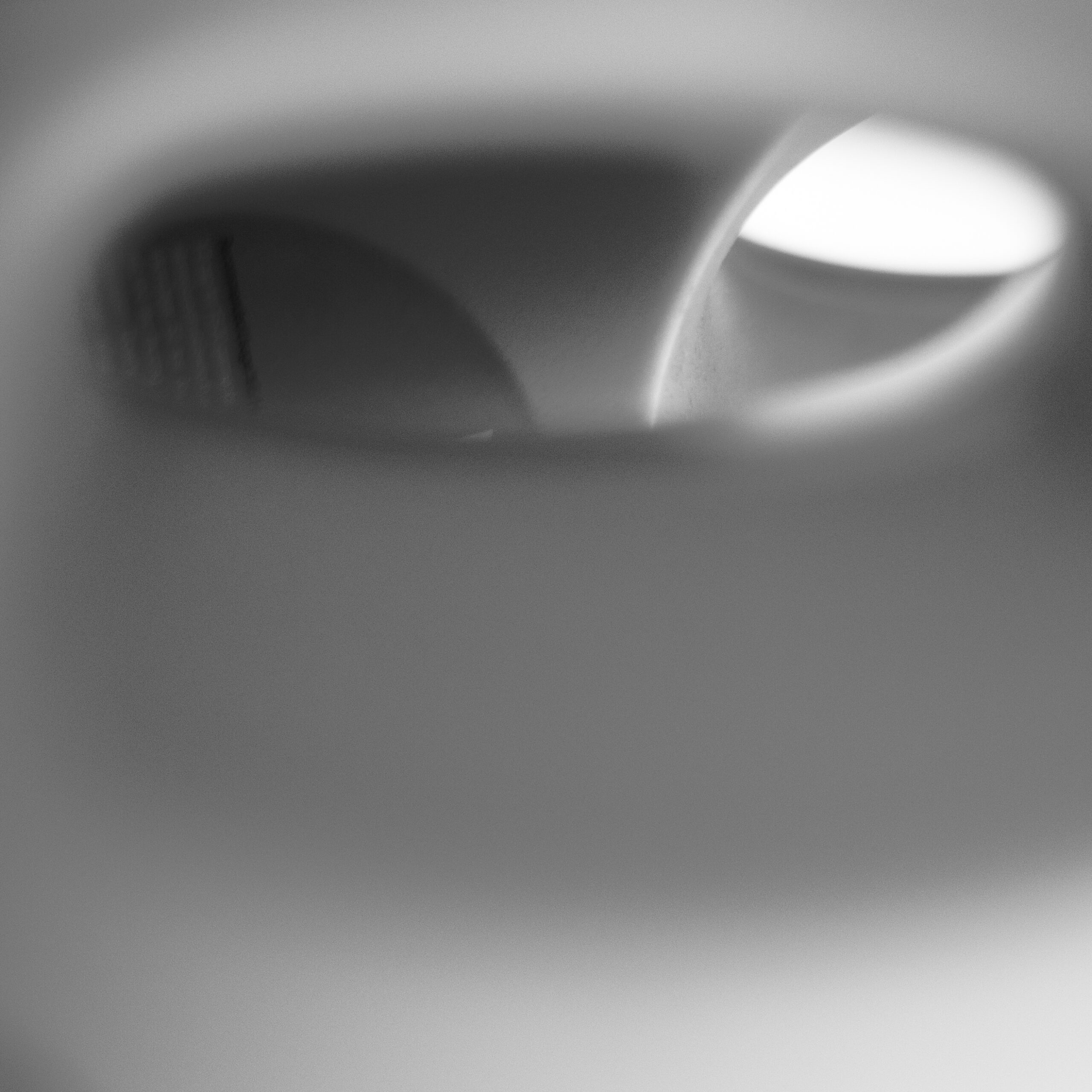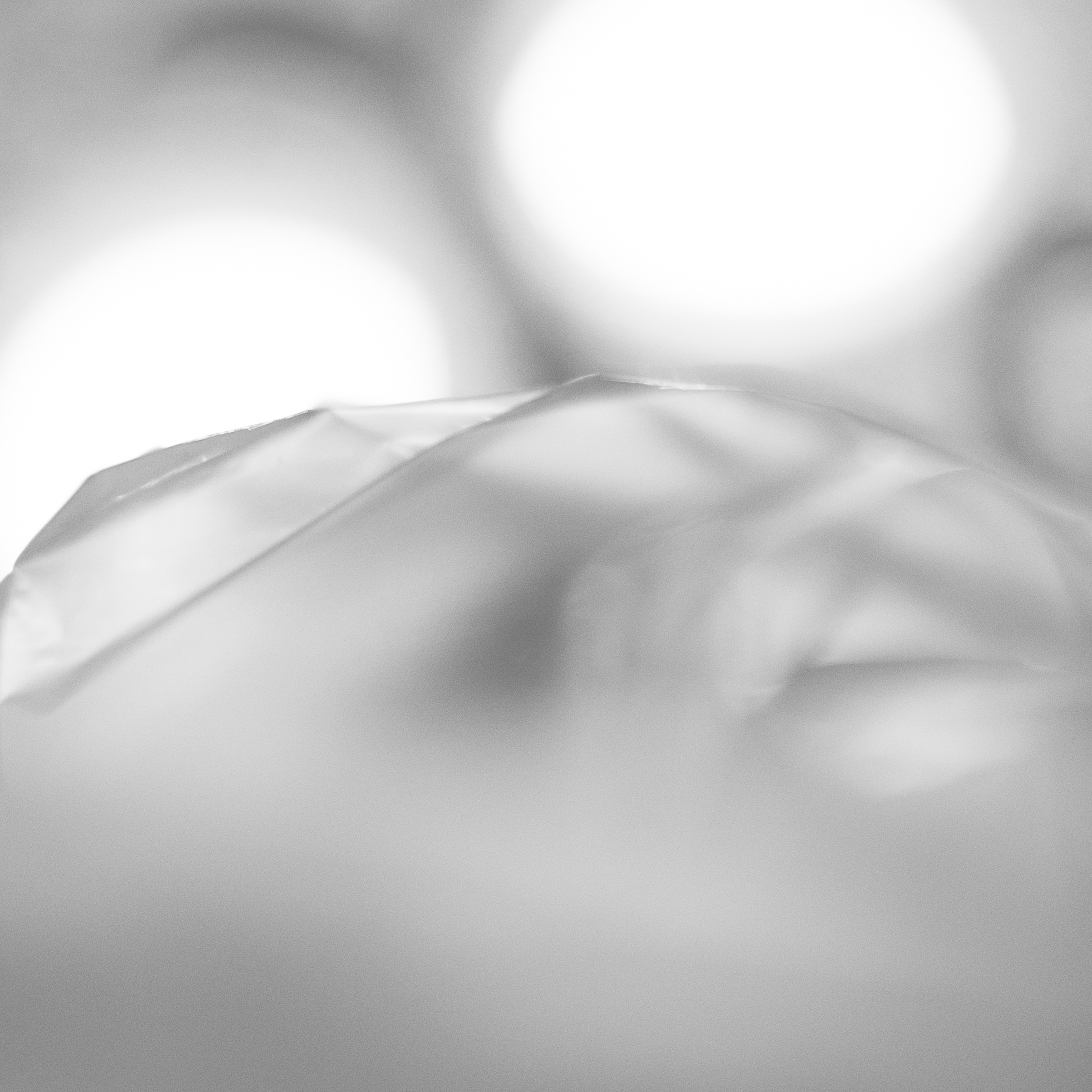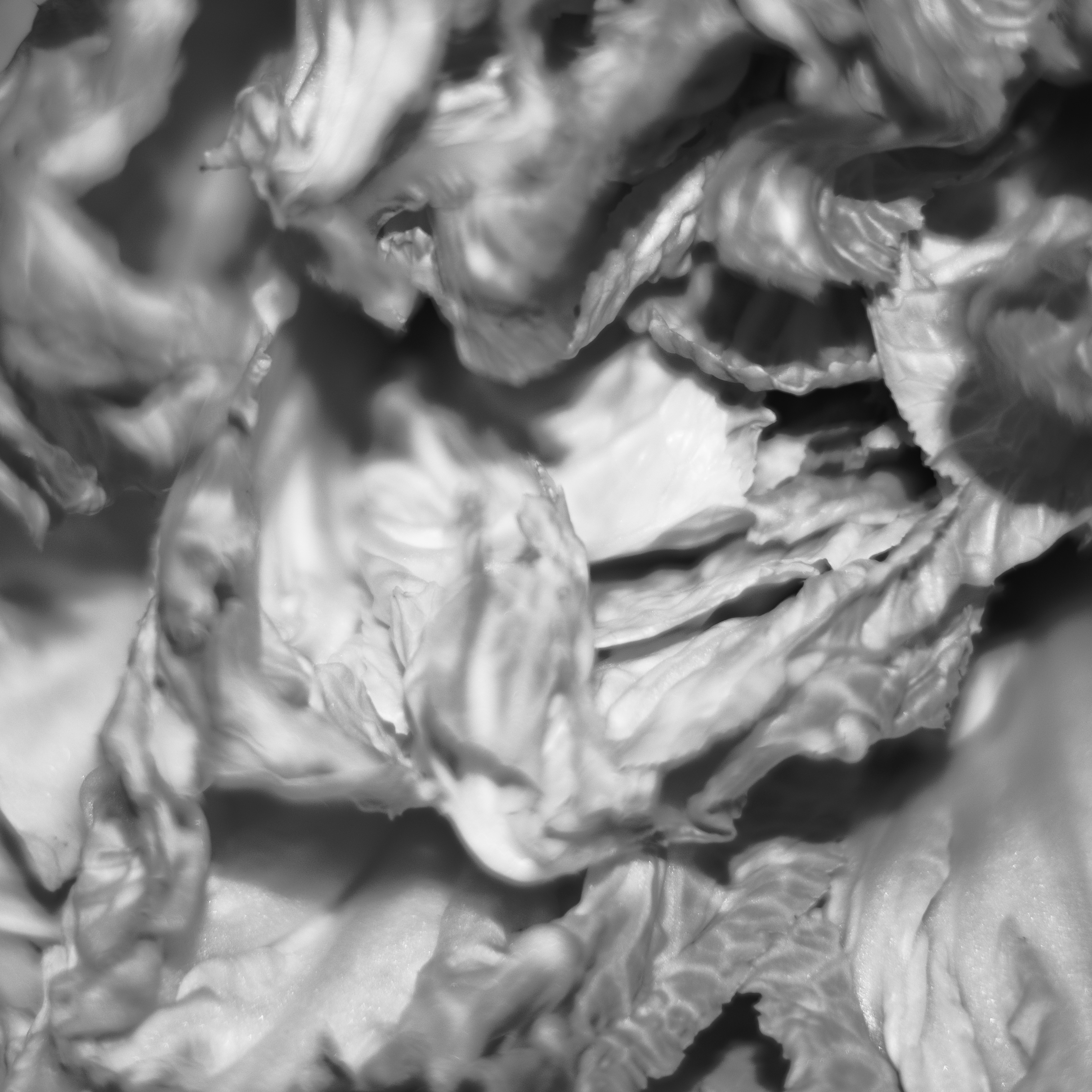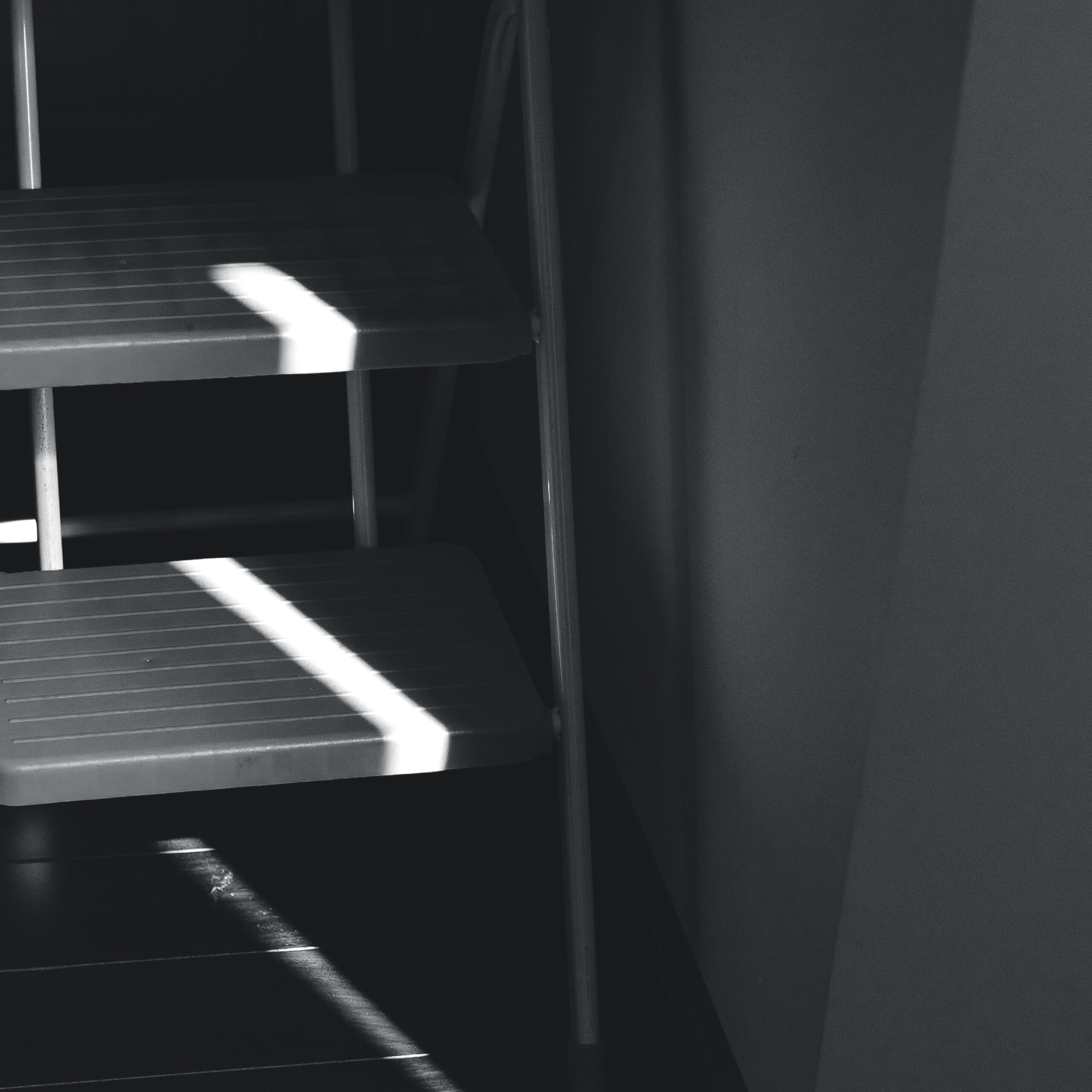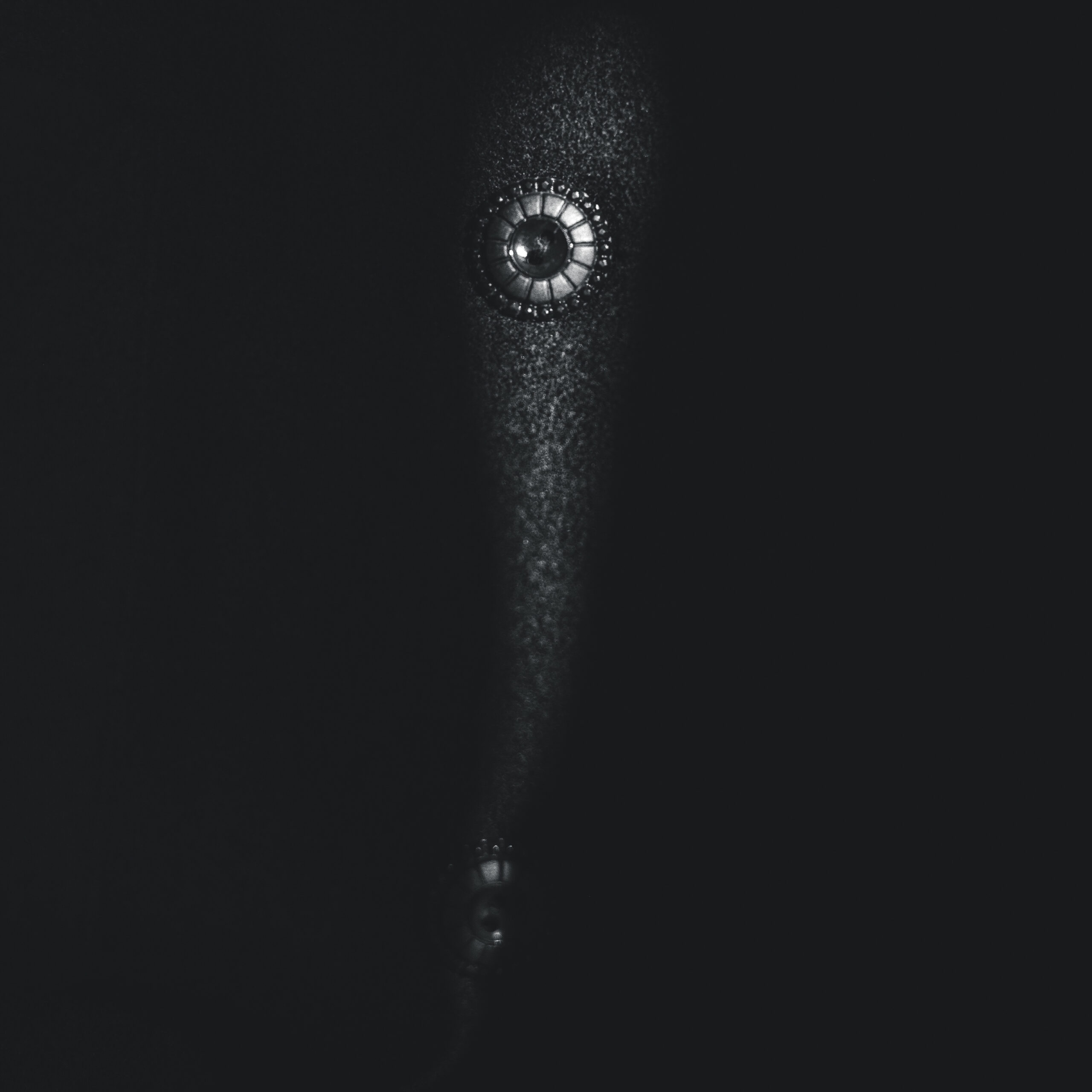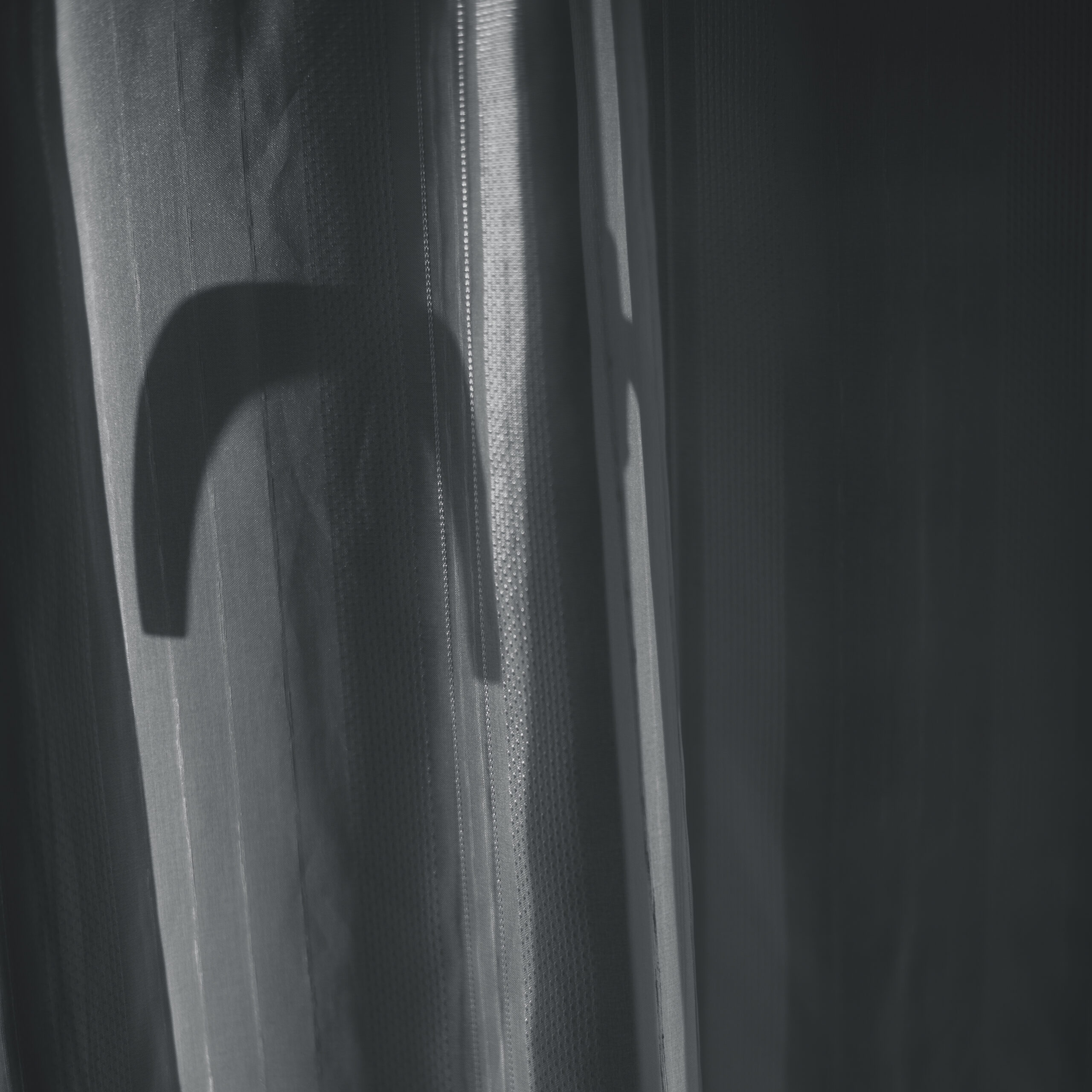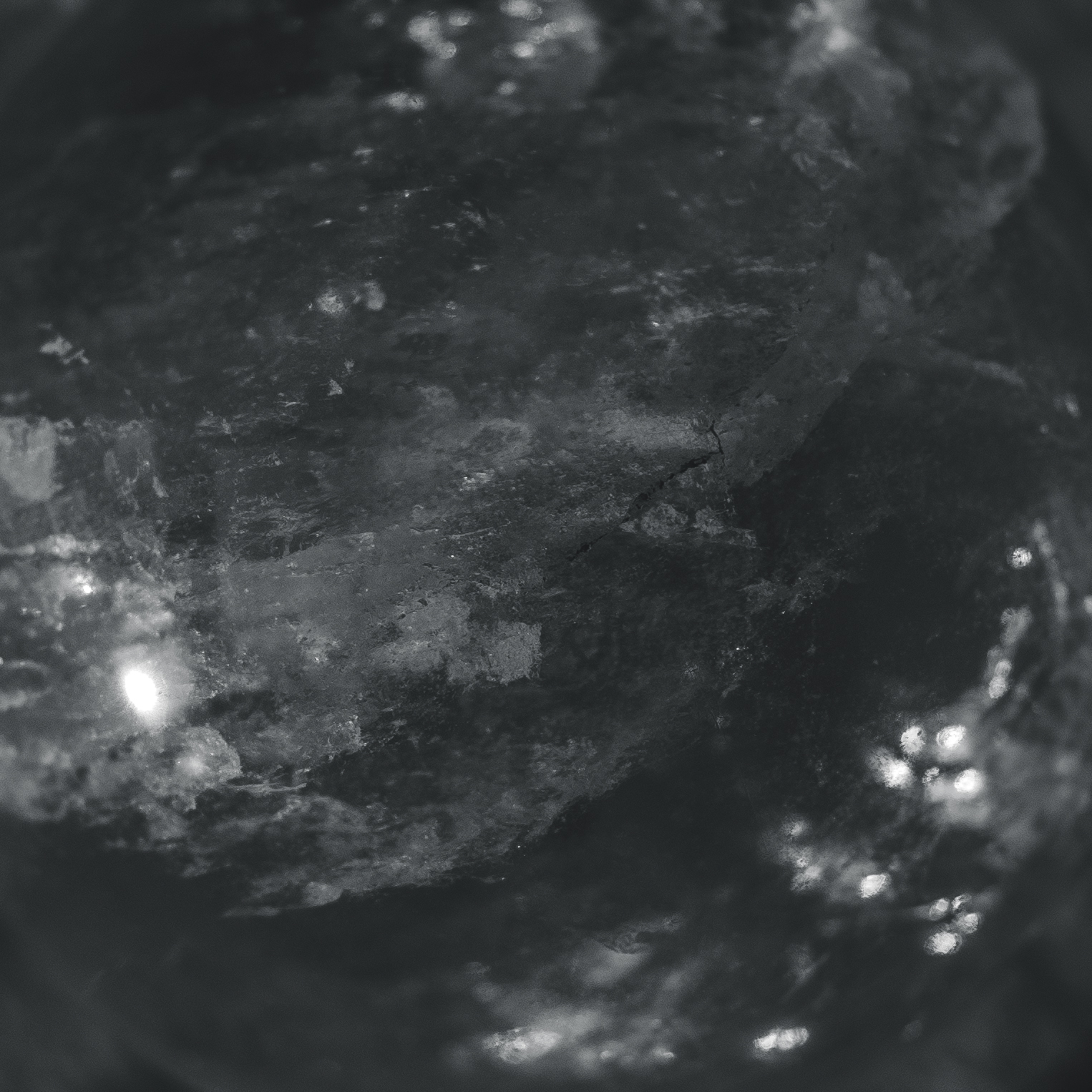Workshop: Unordinary Vision
June He 何涓涓
Biography
June He: Artist, designer, and author.
In this video, June HE shared her creative stories during the pandemic by answering the questions provided by R-Lab. She also introduced two specific art projects: the “Home Studio Artwork Series” and the “Flag Project”, the former of which was the focus of the workshop she held in the video – how to create collages from materials around us.
何涓涓:艺术家,设计师,作家
在这个视频中,何涓涓通过回答R-Lab提供的问题,分享了她在疫情期间的创作故事。她还介绍了两个具体的艺术项目:”家庭工作室艺术作品系列 “和 “旗帜项目”,前者是她在视频中举办的工作坊的重点–如何利用我们身边的材料进行拼贴创作。
Event Overview
There are three parts of this event:
- Artist’s personal presentation, creative ideas, and artistic projects
- Workshop on collage (starts at 21 minutes into the video)
- The artist’s concluding remarks
The collages you will learn about: June HE’s collages are mixed-media collages made with oil paints, some of them are installation mixed-media and some of them are mixed-media on linen or canvas. June HE uses materials mostly from newspapers and magazines, and she also designs glasses in various shapes as one of the common materials.
该活动分为三个部分:
- 艺术家的个人陈述,创作思路和艺术项目;
- 拼贴画的教学工作坊(从21分10秒开始);
- 艺术家的总结发言。
你将会学习到的拼贴画内容: 何涓涓所做的拼贴画是用油画颜料做的混合媒体拼贴画,其中有些是装置混合媒体,有些是亚麻布或帆布上的混合媒体。June HE所用的素材多来自于报纸和杂志,她也会自己设计各种造型的眼镜作为其中较常见的素材。
What you need to prepare
- Scissors 剪刀
- Glue 胶水
- Canvas 画板
- Water 水
- Brush 刷子
- Newspapers, magazines ( which can express your themes, ideas)报纸,杂志(可以表达你想传达的主题和想法)
Are you ready to start making your own collage?
STEP 1: Cut out the content you need from newspapers and magazines Just cut out roughly what you want, whether it’s keywords, pictures or whole news articles, but always remember that they need to be relevant to your topic and the ideas you want to convey.
第一步:从报纸和杂志上裁剪你需要的内容 大致裁剪即可,剪下你想要的内容,不管是关键词,图片还是整篇新闻,但始终记得他们需要和你的主题以及想要表达的想法有关。
STEP 2: Lay out your cut-out material on canvas You will need to roughly lay out your collage in this step and do some simple trimming of the material to see if you need to add or remove any more material. Don’t forget to take a photo of your collage.
第二步:在画板上摆放你裁剪下来的素材 你需要通过这一步大致排版你的拼贴画,并对素材进行一些简单的修剪,看看是否还需要增加或去掉一些素材。同时别忘了给你排版好的拼贴画拍张照片。
STEP 3: Dip the material into water The wet newspaper and magazine material will fit more easily on the canvas and avoid air bubbles.
第三步:将素材浸泡进水里 湿润后的报纸和杂志素材会更容易贴合在画板上,避免产生气泡。
STEP 4: Brush the glue onto the canvas If your canvas is small, you can simply brush it full of glue, adding a little water for better results. But if you have a larger canvas, you should brush the glue on in specific places before putting the material on to prevent the glue from drying out.
第四步:在画板上刷上胶水 如果你的画板比较小,你可以直接将画板刷满胶水,加点水效果更好。而如果你的画板比较大,你应该在将素材贴上之前,在特定位置刷上胶水,以防胶水变干。
STEP 5: Stick the material on in order, following the previous layout
第五步:按照之前的排版将素材依次贴上去
STEP 6: Brush another layer of glue over the pasted material The glue on the bottom is to hold the material in place and the glue on the top is to protect the collage from smudging and damage.
第六步:在贴好的素材上再刷一层胶水 底部的胶水负责固定素材,顶部的胶水则是为了保护拼贴画不被弄脏和损坏。
STEP 7: Wait for the collage to dry
第七步:等待拼贴画风干
EXTRA STEP: Personal creativity
You can draw some patterns on the board in advance to your liking or overlay some of your favourite elements on the finished collage, like June HE’s own design for the glasses.
额外步骤:个人创意
你可以根据自己的喜好在画板上提前画一些图案,或在完成的拼贴画上叠加一些你喜欢的元素,就像June HE自己设计的眼镜。
Feel free to share your collages with us by submitting them to our email: r-lab.curating@outlook.com
欢迎投稿至我们的邮箱,和我们分享你的拼贴画作品!
Text Version of Video
English subtitles can be generated automatically in the video, so only the Chinese version is available here.
大家好,我是何涓涓。我是一名艺术家、设计师和作家,目前居住在美国纽约市区,很高兴有机会和你们进行交流。今天我想向你们介绍我的一些作品并回答一些相关问题,同时与你们分享我是如何在疫情期间进行我的艺术创作的。无论你现在身在何处,如果你有任何问题,都在这个视频的底部找到我的Instagram和微信公众号,欢迎随时与我交流。
首先,我将对一些疫情创作的相关问题进行回答。
第一个问题是:疫情爆发时你在哪里?
在2020年的春天,我在纽约和新泽西地区工作。所以在疫情爆发之后,我就回到自己的家里进行创作,一切看起来都很正常,但我没有料到这一年会发生这么多事情:在这一时期,我的心态、作品和生活都发生了变化。唯一幸运的是,我仍然可以在我的家中与艺术相伴。
第二个问题:你能描述一下你的艺术创作在疫情之前和之后发生的变化吗?
我一直在思考这个问题,所以关于这点,我有很多话要说。这一时期主要导致我呆在家里的时间比以前长了很多。除了去买菜或做一些杂事,如购物等必要的生活活动,我几乎不出门,这导致我已经很久没有见到我的朋友了。我以前每年都会回中国,但现在我已经不能去了,所以这让我有点难过。在疫情爆发之前,我经常会在纽约市中心,以及纽约、新泽西的其他地区,参观博物馆,看看艺术展览,参观各种艺术活动,与朋友聊天,与同事一起聚会。但之后,在去年(2020年)3月的封锁之后,我们的生活被完全打乱了,虽然仍有餐厅和许多博物馆还在营业,但其实去的人屈指可数。大多数人不敢出去,他们更愿意以足不出户来尽量避免传染的可能。因此,一方面,我们不能继续以前的生活—这真的很悲哀,另一方面,我们开始使用大量的互联网媒体,如Zoom,谷歌会议,我们可以进入这些平台并与人交谈,就像现在,你们在线上听着我的讲述,这使世界各地的人都可以聚集在这里,而不仅仅局限于地理位置。某种程度上这为我们打开了一扇新的大门。我能想象在疫情过后,即使人们都回到当地的画廊、博物馆进行线下活动,但网上的展览形式仍然会存在,甚至可能比原先更完备,因为我们已经更加习惯了互联网对于我们生活的融入,所以我们会越来越开放,并能通过互联网去更多地获取信息等等。我认为这是一件伟大的事情,我们的技术在不断进步,比如AR、VR、广播技术,我们可以做很多事情,其中的潜力是无限的。
在这个环节,我想和大家分享一下我在疫情之后创作的一些作品,即“家庭工作室艺术品系列”。正如你从视频中看到的那样—巴雷特艺术中心—这是一个位于纽约波基普西的艺术中心的集体展览。很荣幸他们选择了我的作品作为他们网页上的特色作品,并同时在他们的展览手册和明信片上进行展示。在此我想谈一谈我一直在做的这个系列,这幅画就是其中一个。这是用油画颜料做的混合材料拼贴画,并将这种混合材料的手段运用在整个系列中,取名为“非同寻常的视觉”,其中有些是装置混合媒体,有些是亚麻布或帆布上的混合媒体,其中大小尺寸不一。我做这个艺术系列的原因在于,自从疫情爆发以来,我在家里封闭了太久,所以并不清楚外面发生了什么。我为数不多的信息来源就是互联网,报纸,电视,手机上的应用程序等。因此,我每天都在不断地阅读新闻,以便于去了解发生了什么,这其中大多数是关于疫情时期的负面新闻—关于各种种族歧视、暴力,关于人们正在死亡和世界性爆发的危机,各种阴谋论。每个人都很有压力,我认识的一些人开始变得非常沮丧。在所有这些信息中,有些信息是会相互矛盾的,比如一些人在一些新闻中说A,另一些人却在其他新闻来源中说B,而A和B可能是完全相反的意见,所以我应该选择相信谁?我感到非常困惑,这种困惑使我紧张,使我无法感受到心灵的平静,所以我决定去探索,去看不同国家不同语言的报纸、杂志上的不同新闻,去试图弄清楚世界上发生的真相是什么。但我无法弄清楚,所以我选择了一种方式,即我从不同的新来源中策划了一些零碎的信息,并把它们拼合在一起。这不是绝对的真理相,绝对不是,但它是不同的意见承载在一起,这是我自己独有的记录历史的方式,这可以使我自己能够探索我的情感,弄清楚发生了什么,并给我一些启示。结果就是这一系列的艺术作品,它们确实代表了我对自己的治疗过程。由于除了艺术家,我也是一个设计师,我的专长之一是设计眼镜,各种眼镜:太阳镜、光学眼镜、阅读器……所以我想把我的观点放入这个混乱的世界。我设计了很多不规则的眼镜,例如,不对称的作品。眼镜代表人们的愿景,代表不同的阶级,不同的性别,风格,意见……我把眼镜与不同的形状和不同的矛盾,与来自新闻的不同意见结合在一起,创造出这个混乱的世界。我们生活在其中,我们能时刻感受到混乱的存在,所以我们试图为自己找出一条路,这就是我在这一系列艺术作品中一直想要去思考和表达的东西。通过观赏我的艺术作品,我希望观众能意识到这个世界上存在的差异和矛盾,这样他们就不会仅仅栖息在自己的“舒适区”,他们会洞悉到外面正在发生的一切,你可以赞同,你甚至不必赞同,但事实就在那里,洞悉事实,并对身边的人更有同情心和同理心,而非排斥。
“你是什么时候开始创作混合媒体拼贴画的?为什么使用这种方式?”
坦率地说,在疫情之前,我并没有运用过这种方式。我的创作方式是,我确定一个我想追求的问题、难题或话题,然后寻找媒介,寻找我需要获得的技能从而去实现我的目标。所以拼贴画是我认为能最好的呈现我的作品意义的方式之一,因为我想把不同的报纸和杂志策划成我的艺术作品,有什么比拼贴更好的方式呢?所以我通过不同的媒体学习了拼贴的技术,并结合其他技术开发了这一系列的作品。
“由于疫情,许多展览都被转移到了网上,甚至于一些研讨会和讲座也转为线上。你对这种趋势有什么看法?”
我认为这是一个很好的趋势,因为在疫情之后,一切将恢复正常,事物运行的或许会与以前不同,但仍然会是合理的。我们可以回到博物馆和画廊,但网上的形式将会持续下去,这是伟大的,因为你可以访问世界上任何有互联网接入的内容。这将带来一个新的趋势,一个数字化的趋势,这很好,我也乐于接受这种转变。
我想谈的另一个项目是纽约市洛克菲勒中心的旗帜项目。这是一个公共艺术的作品系列,幸运的是我的旗帜设计从全世界1200多份提交的作品中脱颖而出。这个公共艺术项目在去年夏天的2020年8月曾一度火热,它被广泛流行发表在各种媒体上,如墙纸杂志和无数的线上新闻媒体等。也有一些世界知名的艺术家参与了这个项目,如杰夫·昆斯、KAWS、汉克·威利斯·托马斯、玛丽娜·阿布拉莫维奇……那是一个非常令人兴奋的项目。自从疫情爆发以来,我有半年时间都没有去纽约市中心,直到这个旗帜项目发布。我总觉的曼哈顿太空旷了,去那里不会有太多的意义,但这个项目吸引了无数人去到曼哈顿洛克菲勒中心的中城,他们把那里弄得非常漂亮,有旗杆,旗子上飘着漂亮的旗子,人们坐在旗杆下的公共椅子上,有冰激凌店和一些像小吃店,人们坐在长椅上,看书,吃东西,喝东西,享受他们的美好时光。这就像沙漠中的一片绿洲,这使我瞬间充满了干劲,也很高兴,因为这一现象重现了之前纽约市的生动。你可以从图片上看到,从我的设计中,你能感受到能量的流动,其生动的感觉和明亮的心情。这是我想表达的对于纽约的印象,这是我的感受,其概念基于不同种类的手:男性、女性、跳舞的手、工作的手、喝酒的手、旅行的手;缝纽扣的手、画画的手、测试疫情的手、拿火炬的手、遛狗的手、吃甜甜圈的手、参观博物馆的手。这是一个如此充满活力的地方,我想给人们这种感觉。我喜欢纽约市,这是我选择来这里的原因,但在疫情期间,这个城市失去了很多活力,这是我想寻回的东西。而且还可以看出,这些手有不同的颜色,这表达了这个城市多样的文化和种族,这都是我非常欣赏的。我记得那次,《世界日报》的记者来问我这个问题—《世界日报》是北美最大的中文报纸。你对美国人对亚裔的歧视有什么看法,你想通过你的作品对这个问题说些什么?我告诉她,我们不能沉默,我们必须大声说话,发声。作为一个女性艺术家,我要用我的艺术来发声,使人们能对彼此更加宽容、富有同情心和同情心,而不是相互分裂和排斥。这也是我想通过我的旗帜设计传达的信息之一。
“是否有其他艺术家的作品特别吸引你?”
在这个过程中,有很多我遇到了很多我非常欣赏的艺术家。由于我们的作品被洛克菲勒中心的旗帜项目选中,所以我们在Facebook上组成了一个小组,我们会在其中定期发布这个项目之外的事情,互相支持,我们甚至会去参加其他艺术家的艺术展,支持他们,我们为一些在国外不能来美国看的艺术家们把旗帜拍摄下来,并与他们分享。这是一个以支持为核心的艺术团体,我非常幸运可以成为其中的一分子,在此我想感谢所有参与这个项目的艺术家,这对于我来讲是一次伟大的经历。
“你有什么新的创作方向吗?你是否在寻找新的工作?”
这是一个十分复杂的问题,因为疫情一定程度上阻碍了艺术行业的发展,但也打开了很多新的视角和思维。就我自己而言,我是一个跨行业艺术家,我不仅专注于我的艺术创作,我也做设计,我会与其他人合作,被委托,与他人达成伙伴关系,我会为企业做顾问,同时我也是一个作家,因为我也会在报纸和社交媒体上写专栏。我喜欢以上的一切工作,并不是说必须做的非常多,只是就我个人而言,我是一个喜欢从一个领域跳到另一个领域的人,这让我一直感到兴奋和快乐,并会给我不断向上的动力。所以我认为我不需要去寻找新的工作,因为我已经有了这么多个身份,这么多不同的事业。我从疫情中学到的一件事,就是我是真的希望去与人分享,与人联系。在这之前,我很少有这样的感觉,因为我从没有像这样与世隔绝过,我总会想 “哦,让我们去和人们交谈是个很好的点子”,但我并没有认为这尤其重要,然而在一年多的封锁期间,我真的觉得一个互相支持的团体,同行合作的艺术家,作家或一些组织,它不一定是你的工作相关,它可以是其他如爱好相关,阅读俱乐部,任何东西。一个支持性的团体对你应对这种情况和向前发展是非常重要的。我们还需要继续这样做,即使一切都恢复正常,这对你的心里健康、对你周围的人和社区都有积极的影响。由此我定了一个目标,我想为自己的学生打开更多的机会,我正在试图去与高等教育和学术界建立沟通,我想与更多的学校、大学的学生合作,与他们交谈,与他们沟通,看看以后会发生什么。
“作为一个艺术家,你想通过你的艺术作品向公众表达什么?”
当我的艺术作品在外展览的的时候,公众其实是我无法控制的,因为他们是有自己的主观意识的,你无法控制每一个步骤,或者对他们进行微观管理,因为艺术作品的第二次创作是艺术作品本身的交流,每个观众都是不同的,他们有不同的经历、性格,他们从你的作品中得到的信息、情感是不同的。你不能说我的每件作品都有一个正确的答案,这是不存在的,他们可以用他们想要的任何方式来理解。我对此表示理解并尊重,我希望从我的作品中公众可以获得对于他们具有积极意义的内容。
“对观众有什么建议吗?”
我想给观众的建议有四点。第一,对待自己的感受要诚实、真诚。第二,在你不知道的时候不要妄下定论,不要在你开始对一个主题做调查之前就先下结论。第三,多多地去探索,有很多事情都是我们所不了解的,所以要不断学习,不断前进,探索未被发现的领域。最后,对新的想法、新的人、新的环境希望你们保持开放的心态,以上。
那么在这个环节,我将与你们一起交流如何用我的方式做一些基本的拼贴画。
其实,做拼贴画本身并不难,只是其思考的过程需要很长时间,所以在这里我想先给大家介绍一下我所用的工具。首先当然是一把剪刀,因为我需要用这把剪刀来剪裁我的拼贴材料。这是一块画布,最终我将把所有的报纸、杂志、什么拼贴材料粘在这块板子上,这将是我最终呈现的作品,我还使用某种丙烯酸胶水,我使用的是金色的普通胶水,我喜欢哑光的效果,所以我使用哑光的,你可以选择任何其他胶水以替代。最后也是最重要的是我的材料—即我想把什么放在这个面板上。我已经收集了很长时间的报纸,各种各样的报纸。英文、中文、杂志、报纸,因为我的项目就需要收集尽可能多的报纸,并确保它们可以随时为我所用。由于这是我个人的艺术作品,所以我不会展示一些以我不了解的其他语言进行展示的报纸,毕竟这与我个人相对关系较少,同时由于报纸取决于地域,所以这些其他语言的报纸也很难获得。为了这个项目,我从亚马逊上买了报纸,也通过其他网站买了一些,或者从我当地的熟食店买到,有些是免费的,你可以从当地的小便利店买到。所以基本上这些报纸可以比较具体地呈现我所在地区的人们正在阅读的东西,同时我以一种主观的方式对它们进行了筛选,比如,我认为某些新闻对我的目的有价值,所以我想在我的拼贴画中呈现这个时期的新闻的某种价值和不同的意见。我之所以只用中文和英文,是因为我不懂其他语言,如果我用其他语言,就意味着我必须问其他的人,这不是我的观点,我不熟悉这些信息,所以我只是做我熟悉和舒服的东西。
同时,报纸的选取时间取决于你的项目,即你想呈现你的艺术作品的时间线,你也可以选择这周或这天的新闻。以演示为目的,现在我将只使用我手中现有的报纸,这是我在2021年和2020年期间收集的。
所以首先,由于我喜欢这个新闻,那就让我们从这里开始。首先,报纸名叫The Star-Ledger,这是我住的地方的报纸,所以我想从这里剪下一些东西。这一步就是我需要思考我要在我的作品中呈现哪些信息。”强生公司的疫苗提供保护”,这是1月31日的新闻,稍微早了一点,现在我做的这个已经是4月了,但是以演示的目的来说的话足够了。由于我认为这是一个重大的新闻,这是一个持续性的信息,我想把它包括在我的作品中,那么现在我们就把这部分剪掉。现在这一阶段,我只剪一个大概的片子,包括图片和一些文字,以后在我的作品中做排版的时候,我会把它们还原成某种排版,再进一步编辑它们,现在我只需要大致筛选出我想要的东西。
第二步,我们先把这个放在一边,我想展示一些中文的新闻:3月25日,这是有关停止亚裔歧视的话题,我认为这与我密切相关,这对我十分重要,所以我把这个剪下来。不必要担心歪曲的边缘,因为我们以后还要再修改它们。我想再多加一点中文新闻的信息,让我们看看我们能放什么。这是美国国内旅游的一些新东西,从4月1日起,到达纽约的旅客不必再进行检疫。这是主流新闻,我要把这个剪下来。很明显,现在我们正处于疫情期间,所以很多新闻都与疫情有关,对我来说,它影响了我的生活,而且十分具有历史价值,所以我会把这个放在这里。下一份报纸,这是《纽约时报》。艺术与休闲。这是2020年5月17日的,所以这是相当久远的,但仍然是在疫情期间,所以它依旧是相关的。”这是我眼前的直播吗:所有有互联网连接的世界现在都是一个舞台……”,这仍然是相关的,因为我们仍然处于疫情的封锁期,所以让我把这个剪下来,因为我认为我们可以用它的某个部分来做一些修饰,我喜欢大标题,因为它们引人注目,所以我也要把这个标题剪掉,让我们再继续看看其他的新闻。这里有一些非常有趣的新闻,例如,查尔斯·伊姆斯夫妇,我真的很喜欢他们的作品,但这与我在艺术作品中谈论的内容有关吗?也许并不。因此,即使我真的喜欢这些图片和文字,我可能也不会把它们放到我的作品中。我很喜欢这个标题 “没有比家更合适的地方”,也许我会把它放进去,因为在疫情期间,我们已经在家里呆了这么长时间,我们中的许多人已经改变了对生活的看法,可能我们以不同的层面去爱我们的家,所以我认为这里有一个不同层次的意义,它也有一个隐喻的意义,这是我想要的内容。这里 “为启示录而烦恼”,我喜欢这个句子,它也很有意义,所以让我把这个剪下来。另一份中文报纸《世界日报》,有时我会在这份报纸上发表我的文章。最重要的新闻 “停止对亚裔的仇恨”,由于我们已经把有关这个话题的内容放进去了,所以这个信息我们不需要了。”30岁以上的纽约人今天可以开始预约疫苗”,我认为这与疫苗相关,那么让我们提取出这个信息。坦率地说,我认为我们现在有足够的材料来创作,如果有什么不足,我们可以随时回到报纸、杂志上再提取我们想要的内容。
这是我的画板,不是那么大,因为我有这些大板块,现在让我们看看应该如何布局。这是一个巨大的新闻,实际上我只需要几个元素,现在我们来做这个。关于疫苗,我想要的是它的关键词,并且它不一定是规则的形状。因为我们的画布很小,所以我们只需要新闻的一些部分,所以也许我只需要弄一个标题。你总是可以覆盖它的一部分。就个人而言,我非常喜欢文字而不是图像,因为有时图像会让人困惑,比如这些图像不是很好,因为它们非常相同,所以我在这里暂时得到了文字。我们总是可以重新审视那些我们刚刚扔掉的景象。我想呈现一些想法和人们在疫情期间的感受,以及他们所追求的意义。”Live Stream “仍然很有意义,我们一直在做Zoom call,所以我们把 “Live Stream “放在这里。我觉得这个标题过大了,那就选一个小一点的部分吧。现在我看这些,我觉得我们缺少一些东西,我需要增加一点信息。因为我住在纽约,所以让我把纽约人放在这里。而且我想多放一点图片,让我搜索一些有趣的图片。我花了一些时间来找到所有的图片和文字,字体的类型,以及我想要的尺寸,我一般会把它们铺在这个面板上。
现在,我可以开始把它们粘上去了,为了做到这一点,首先我需要准备一些水,我需要把所有这些报纸,杂志的纸张浸入水中。这样做的原因是,如果它们没有被弄湿,最后在干燥的拼贴画上会有很多褶皱。此外,我还需要用刷子来剜出胶水,以把报纸粘在画布上。首先,我想给这个布局拍张照片,因为如果这是我想要的,当我把它们浸入水中后,我可能会忘记这个布局原先是什么样子的,所以我需要拍张照片。之后我会逐渐思考,我首先需要把什么东西放进水里,也就是最底层的东西,我不想把所有的东西一起放进去,因为我想按照一定的顺序来记住它们。那么现在让我把最下面的部分放进水里,我也可以把这些放进水里,因为它们需要一些时间来湿润。现在所有的纸都沉在水底了,之前它们都是浮在水面上的,现在既然它们在水底,就意味着它们已经准备好了,它们被完全浸湿了,那么我们现在可以开始把它们粘在画布上了。首先,我需要把我的画笔浸入水中,让它也被浸润,然后很快,我会在画布上涂上一层胶水。因为这是小画布,所以我可以很快地把胶水涂满它,在它们干之前,我会把所有的纸放上去。但是如果画布很大,我就要把胶水分开上,因为如果我把它们全部放上去,胶水可能很快就干了,那就会浪费胶水。我现在要在胶水里放一些水,这样他们就会干得慢一点。我喜欢让它干得慢一点,这样我就可以调整,这就是为什么我也喜欢油画,因为你可以一直调整,它需要很长时间才会干。我们总是可以不断地添加胶水层。首先,让我们把我们的底层放上。在你把它放到订好的布局上后,尽量不要移动它们,因为它们会因为胶水而很快粘住。还有一件很重要的事情是,你不能只在底部放胶水,也要在顶部放。因为上面的胶水的作用是隔离层,以确保这些纸在未来会有一个保护层在上面,这样就可以让灰尘等不会出现在这些纸上。如果你做丙烯画,这就像一个保护层。现在画面还很湿,但别担心,它很快就会干,之后我们来放第二层。我选择了一些元素,手表的组件和代表时间的背景,因为从疫情开始,我们就一直呆在家里,时间对我们来说是一个非常有趣的元素,时间的概念在某一层发生了变化,在某种程度上,有些人会觉得时间比平时长很多,而有些人觉得时间过得非常快,每个人对世界的认知是不同的,我想把这个元素加进去,让人们去思考。我使用的这张图片是澳大利亚森林火灾后期的一只袋鼠。那是2019年底或2020年,我记不清楚了,那是一个非常悲伤的事故。现在我们把所有的元素放上,我需要在这些纸上面再加一层,但是要小心,不要过多的移动它们,我不想改变它们的位置,因为它们已经在我想要的位置了。要确保给它们足够的介质,并保持它们在同一位置。不要忘记清洗画笔,因为胶水很快就会凝固。
下一步,我们只需要等它干了,然后工作就完成了。对我来说,通常我会在上面添加更多的媒体或混合媒体元素,或者分散在不同的位置,因为这些东西会给我以灵感,我觉得它们是我展示的一部分。至于拼贴画的部分,我们已经完成了,你只需要等待它全部干透,它就会变成哑光效果,上面就不会有这种光的反射,这将会是一个有趣的作品,会在不同角度给人以启发,不同的观众看它也会有不同的想法,这是我肯定的。
所以我们的拼贴部分的环节就暂时完成了,现在让我们进入下一步。
很多人问我在疫情期间如何进行艺术创作,有没有什么应对策略?我认为首先,非常重要的是,你需要学习一些交流的软件和平台,如Zoom、Youtube Live或Google会议等,这些对与其他人交流非常重要。对我来说,我之前对电影拍摄和剪辑一无所知,但在疫情期间,我必须做很多由各种组织主办的研讨会和讲座,有时他们不想做现场,他们希望它是可控的,所以我需要事先准备一下,并把它们剪辑成我想要的样子。为此我看了很多教程,自己研究了一些视频编辑技术,现在你可以看到这个研讨会,是我自己拍的,自己编辑的。所以你可以看到我的演讲,这是我应对的方式,学习的新技能。还有很多虚拟的资源,这是非常好的,因为我以前意识到,有很多艺术创作资源,你需要付钱,或者你必须到现场去谈,参加一些研讨会讲习班。但是现在,自从疫情爆发以来,他们几乎把所有的这些资料都搬到了网上,其中一些,原来是很贵的,但现在免费向公众开放。另外,例如,一些博物馆有开设虚拟画廊,你可以从互联网上,从你的家里访问它们,也可以从图书馆下载数字书籍。这实际上是一个非常好的开始,如果这个趋势继续下去,我们可以减少很多不必要的地方的消耗,以节省我们的时间,也可以保护地球,产生更少的温室气体,减少我们的碳足迹。就像我说的,一个支持性的团体是非常重要的,找到你自己的基地,找到你的朋友,他们和你有一些共同的东西,比如爱好,你感兴趣的东西,种植,花园,阅读,跳舞,并定期一起做事情。这将会对你有极大的帮助。
既然你们在这里看我的演讲,我相信是因为你们对艺术或创意领域具有热情,我为你们感到高兴。希望你可以去追求你的梦想,去采取任何必要的行动,不要因为疫情而气馁沮丧,疫情终将会结束,一切都会以更强大的姿态回归正轨。如果你有任何问题,或有任何项目想与我合作或探讨,请随时与我联系。最后,祝愿你们好运,并且可以终生追求并享受你与艺术的相生相伴,感谢你的参与!
Staff
Contact Person: Ifance FAN
Planner: Christy YANG, Ifance FAN
Text: Christy YANG
Translator: Jiaqi GAO, Christy YANG
Proofreading: Jiaqi GAO, Christy YANG
